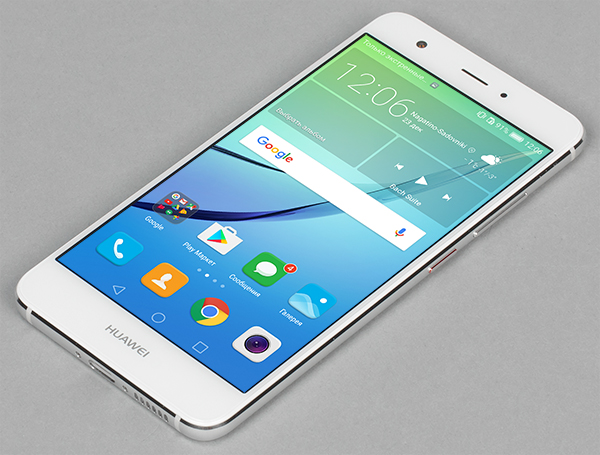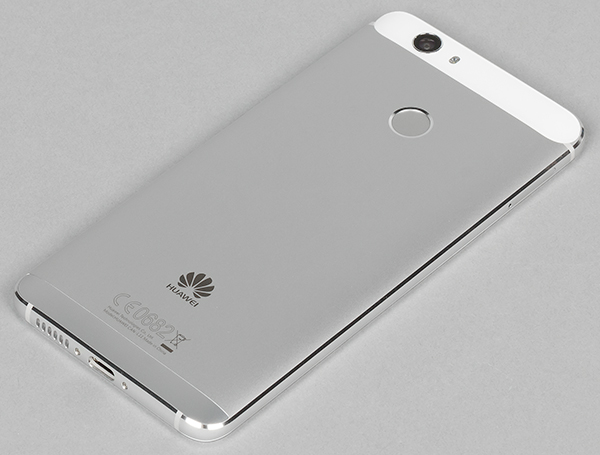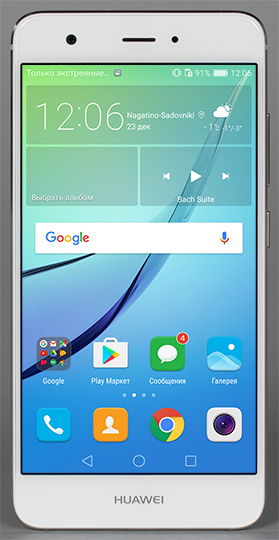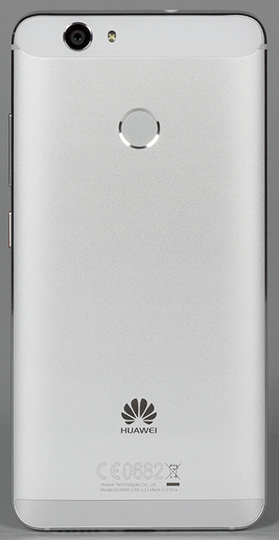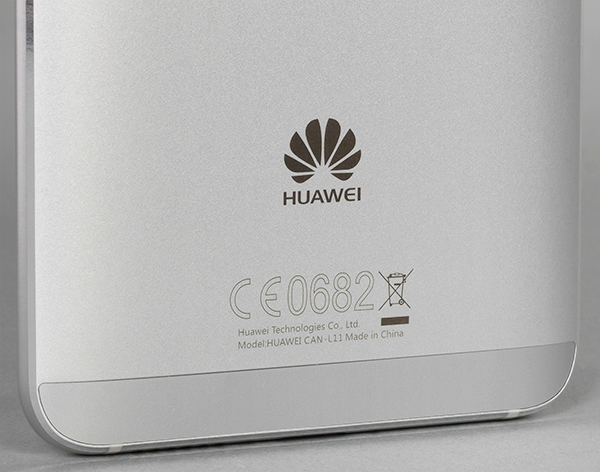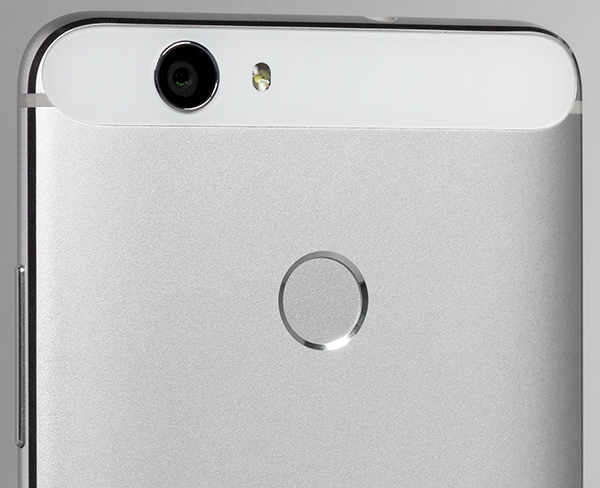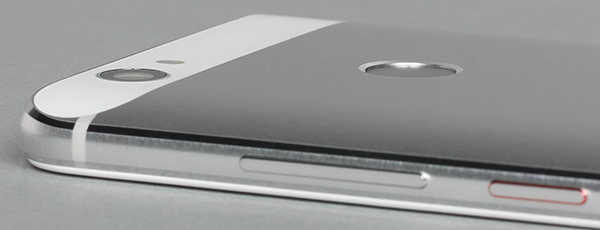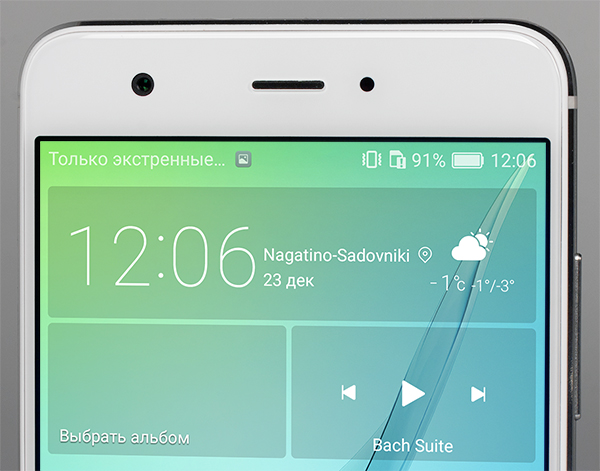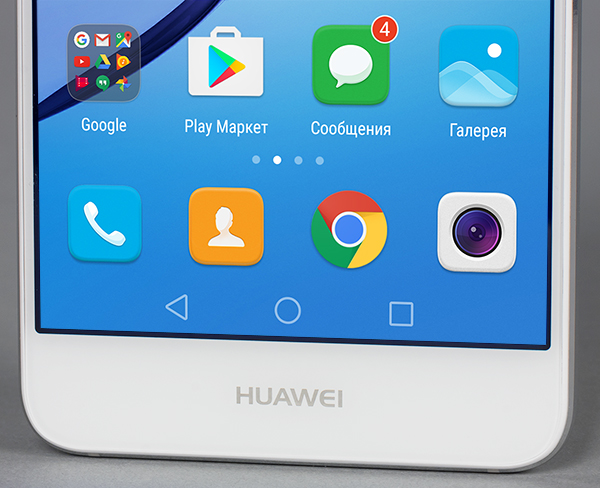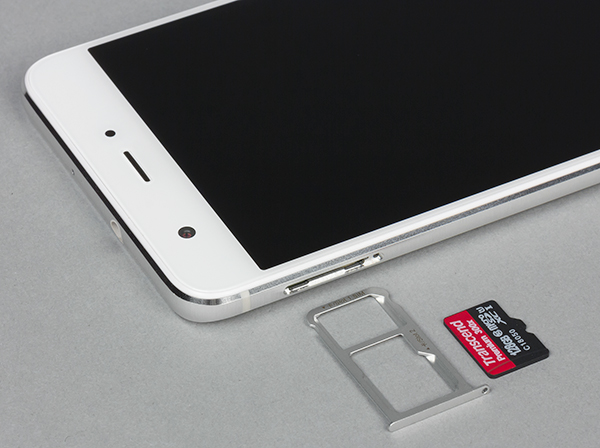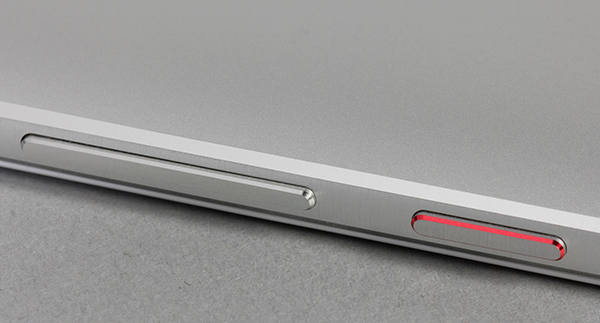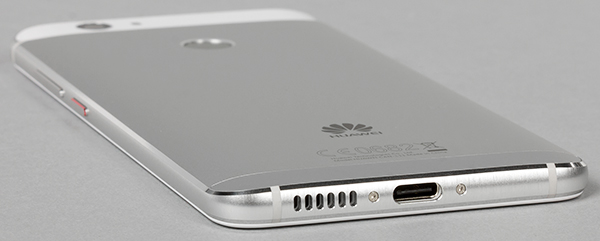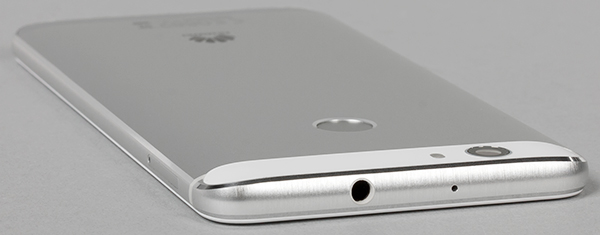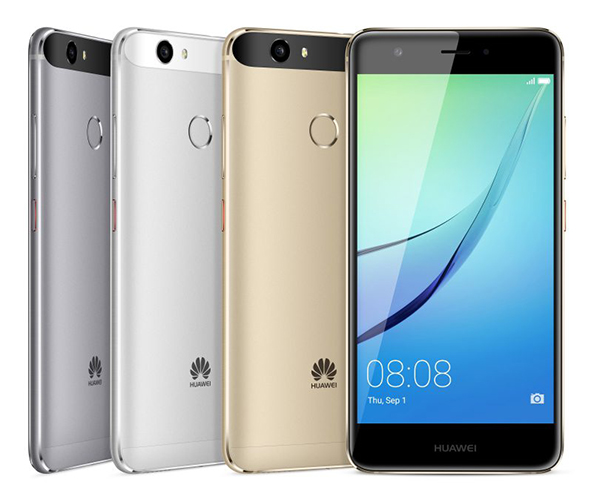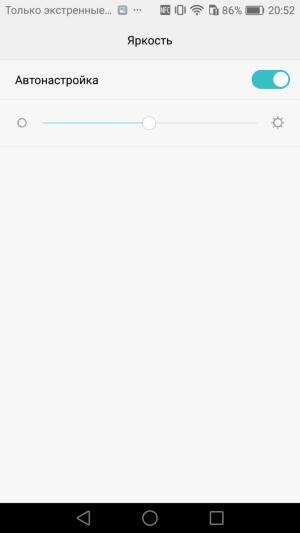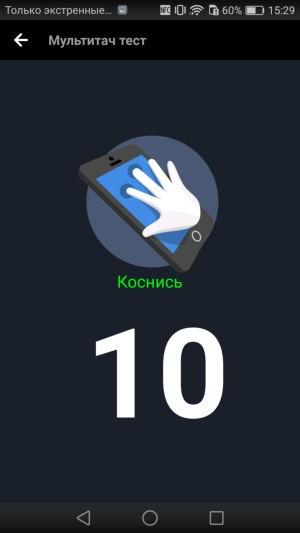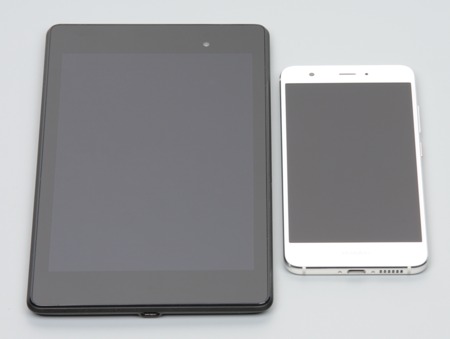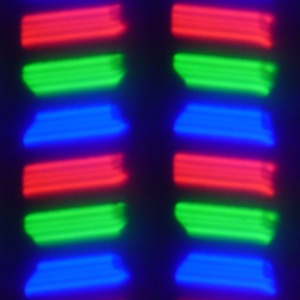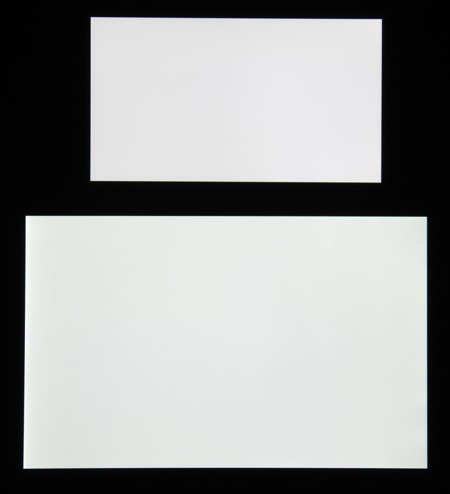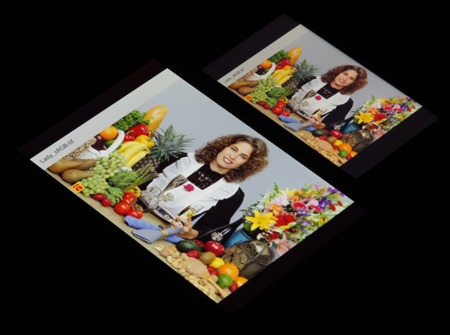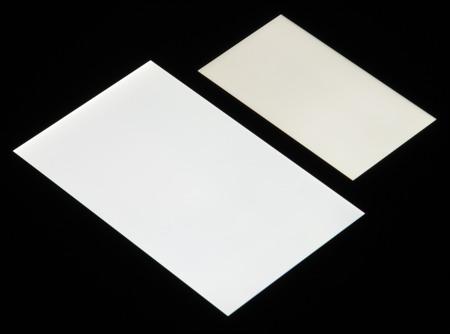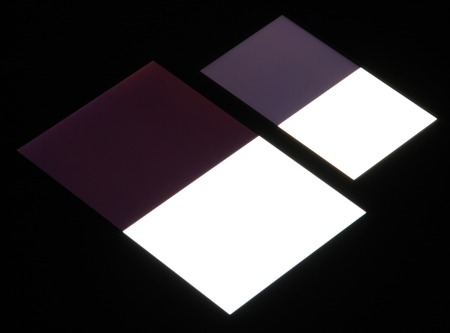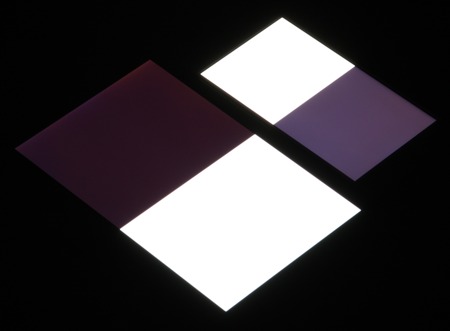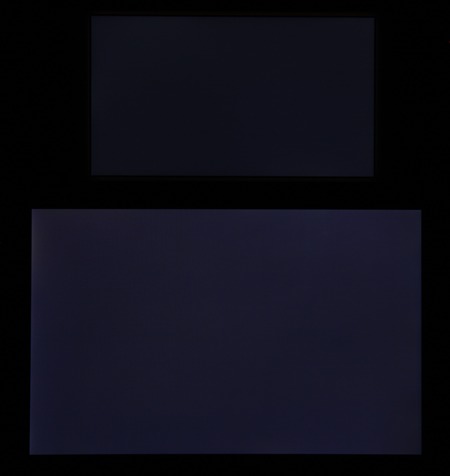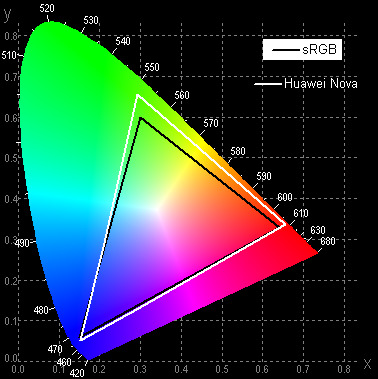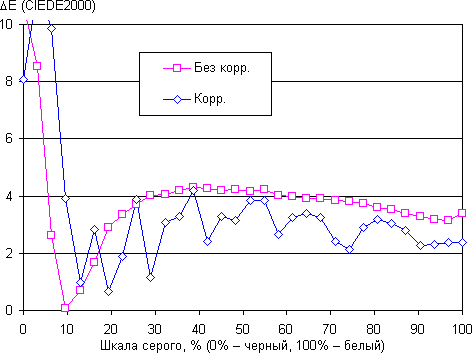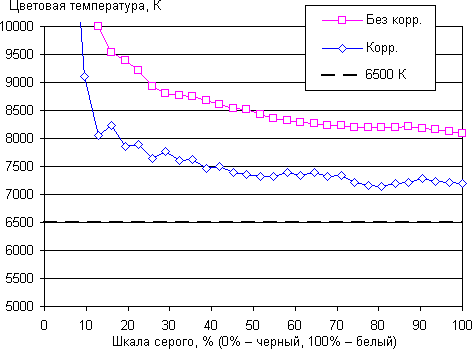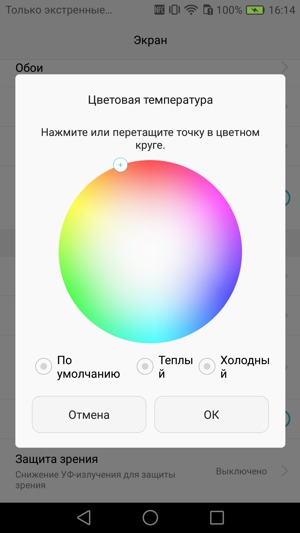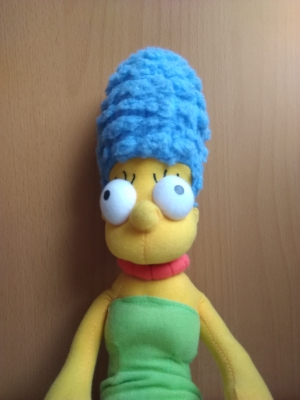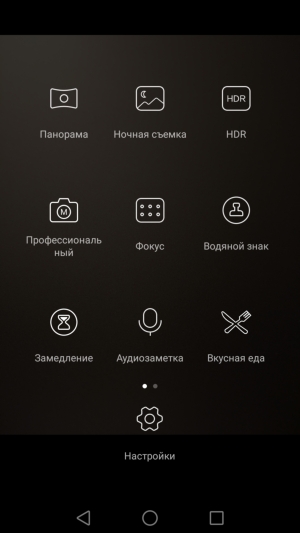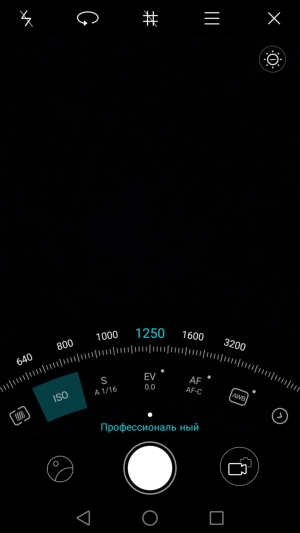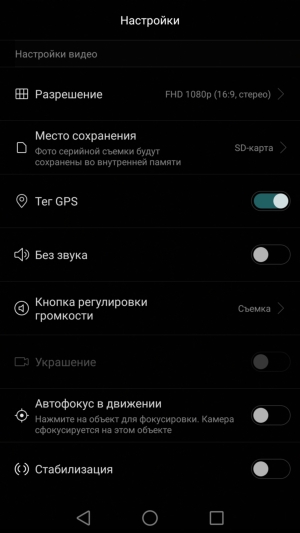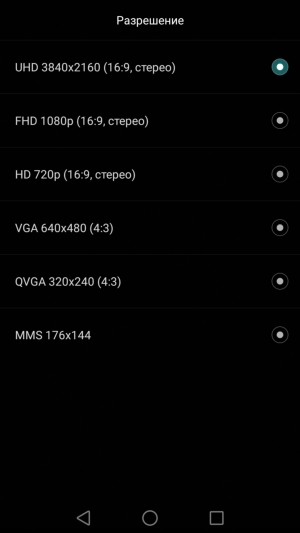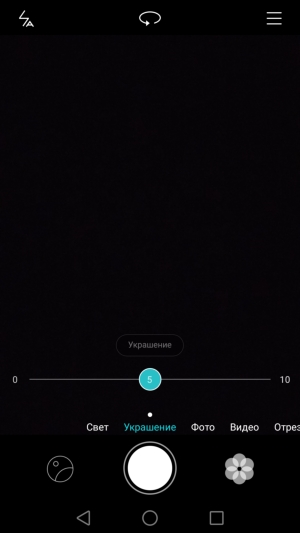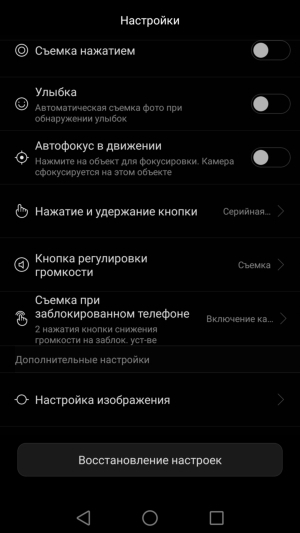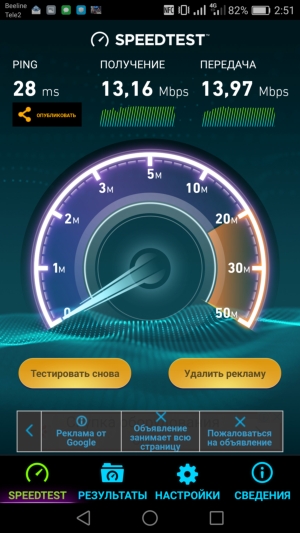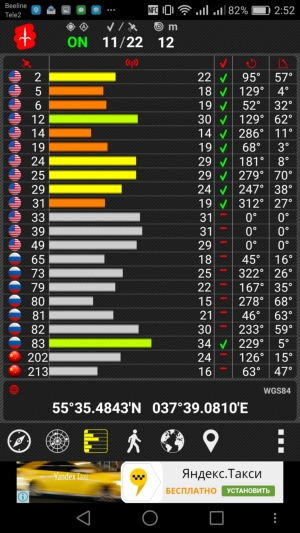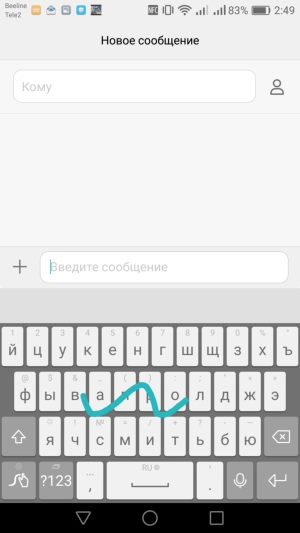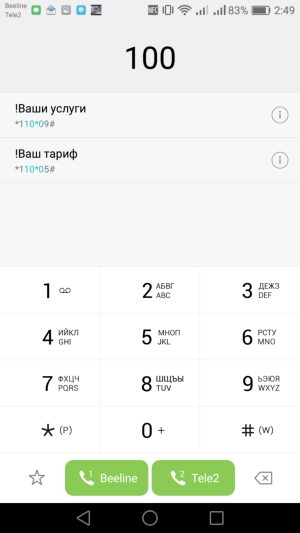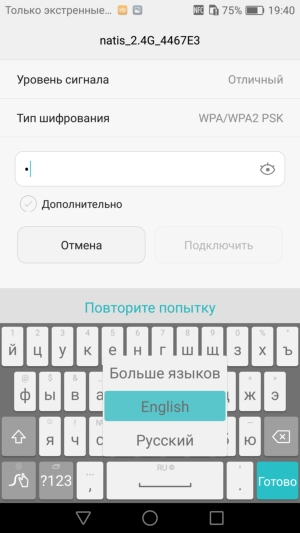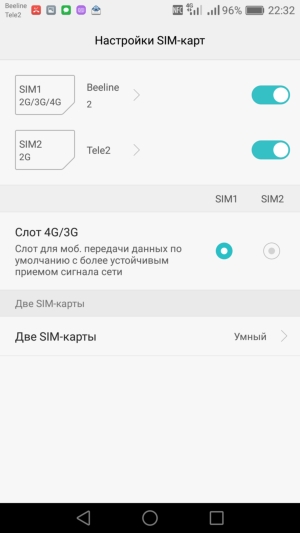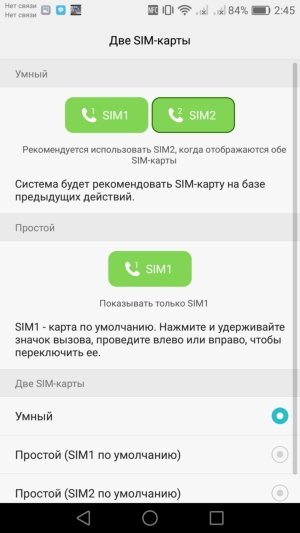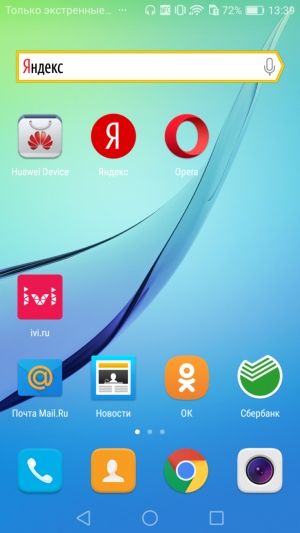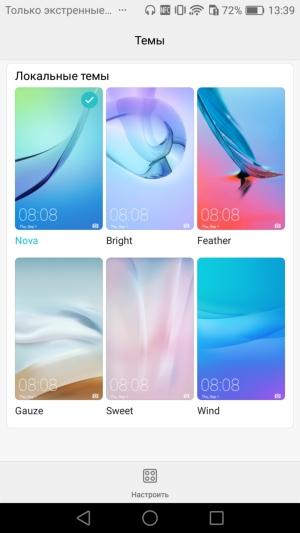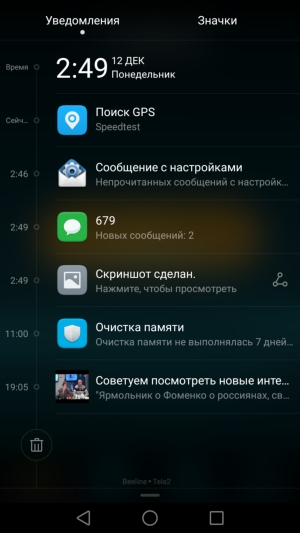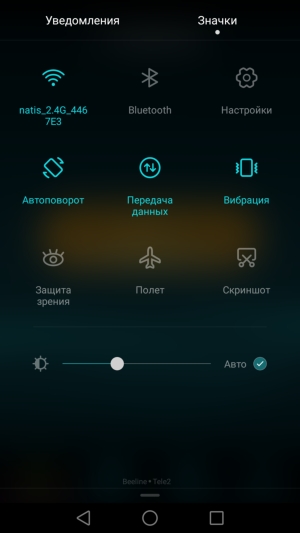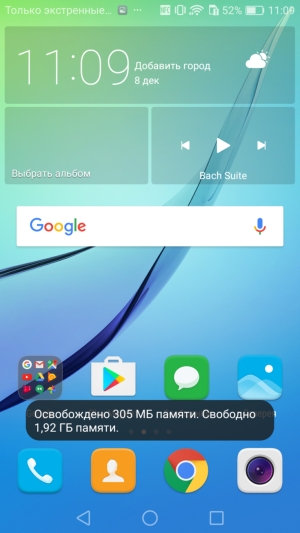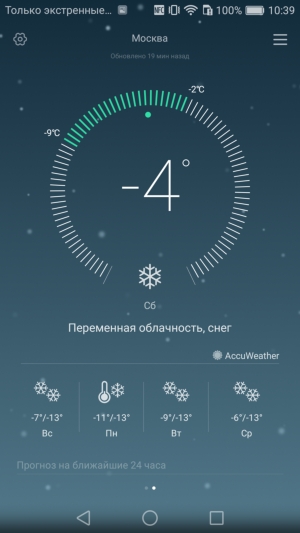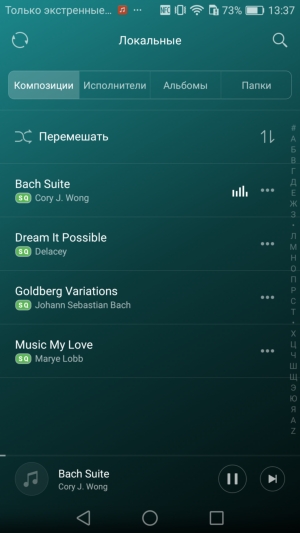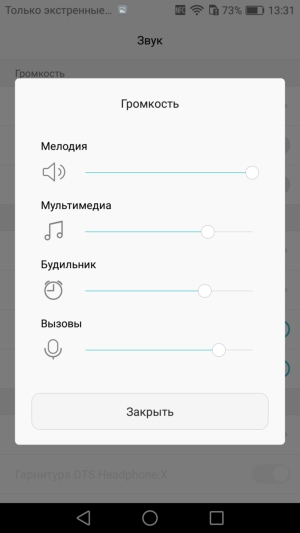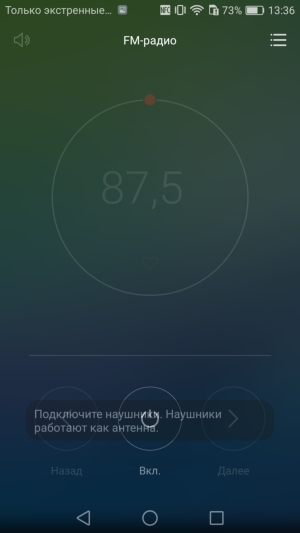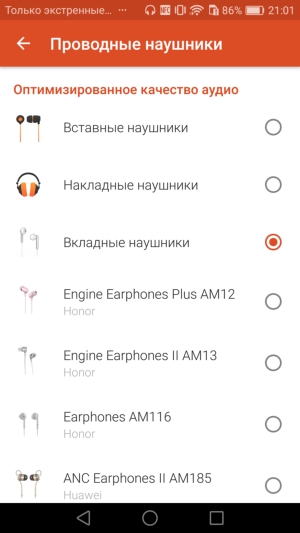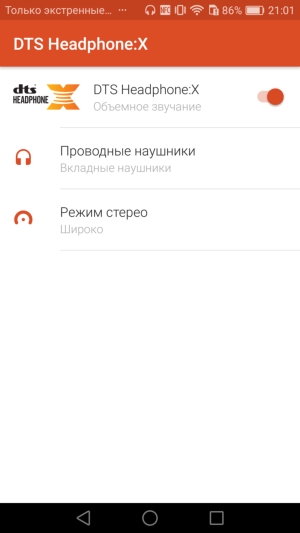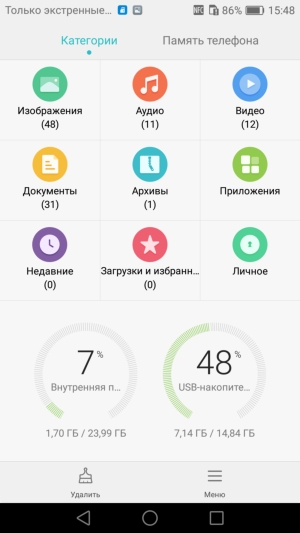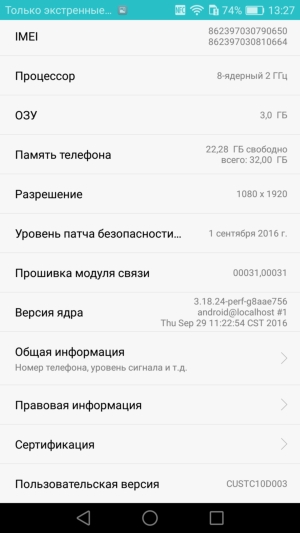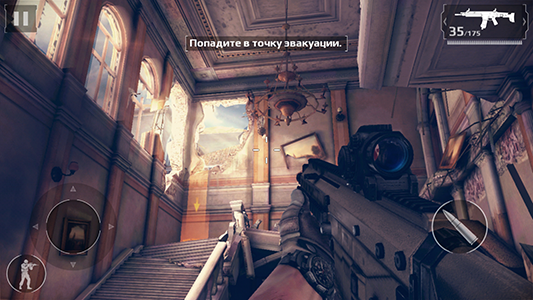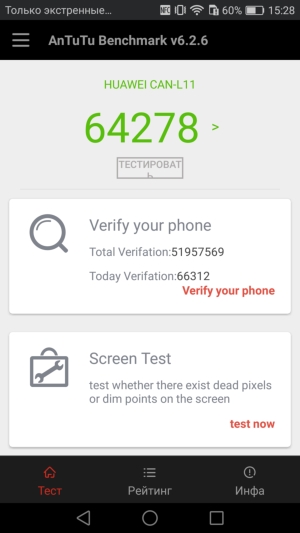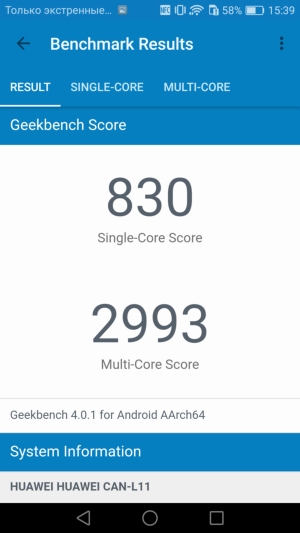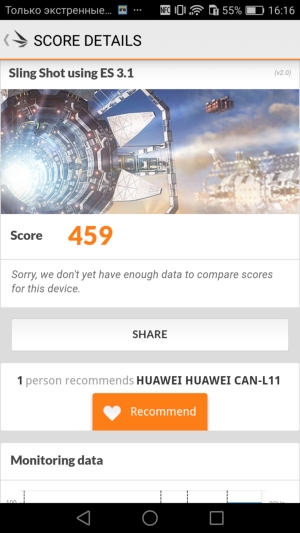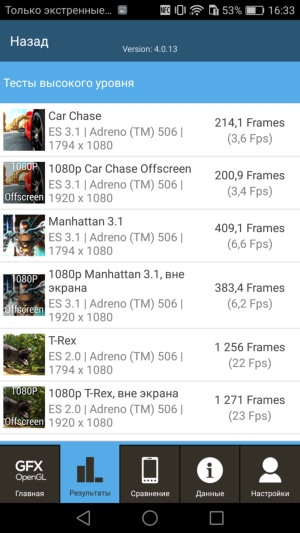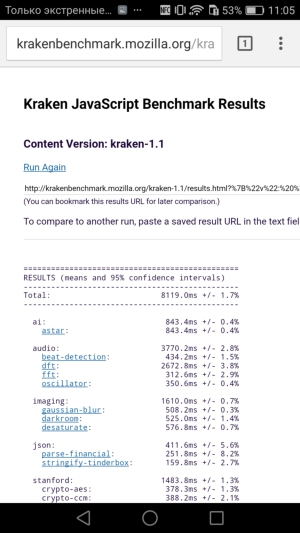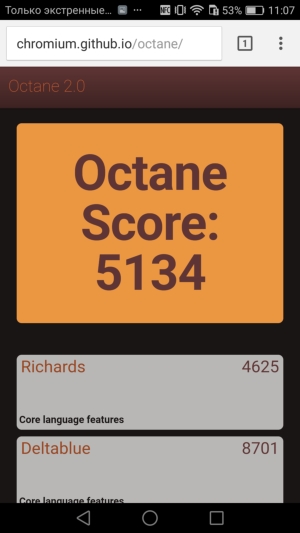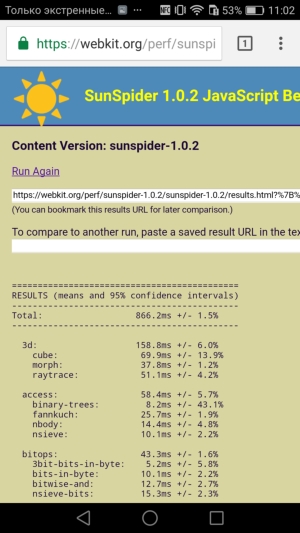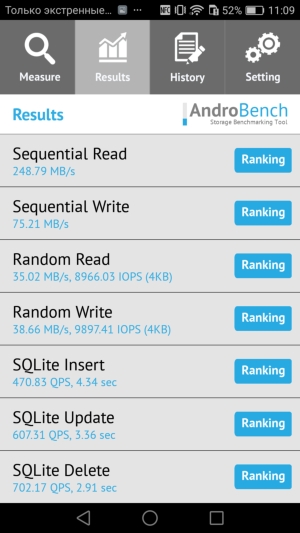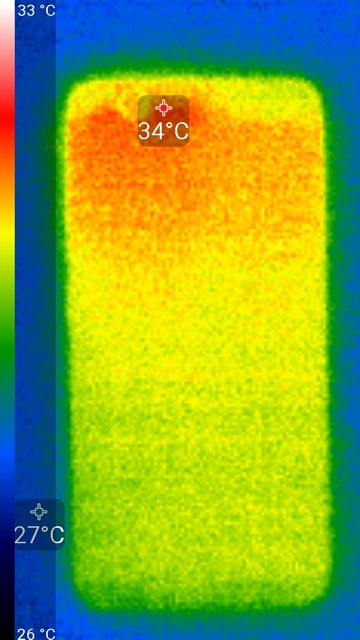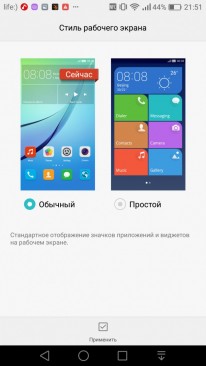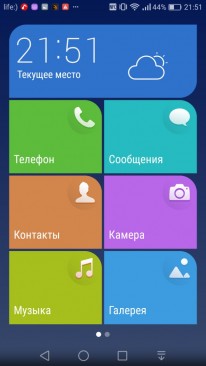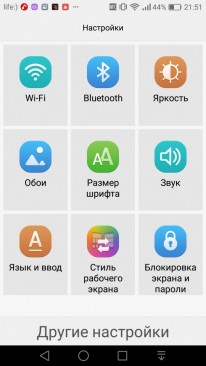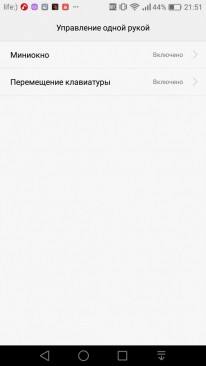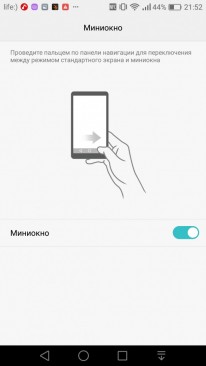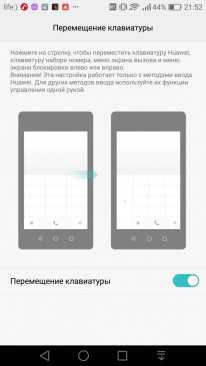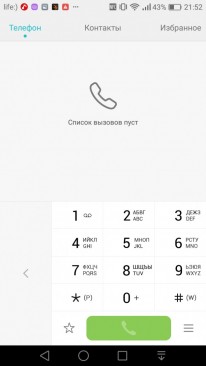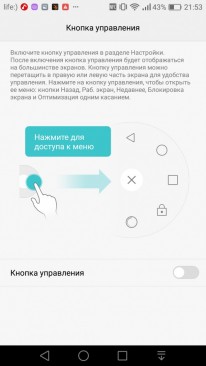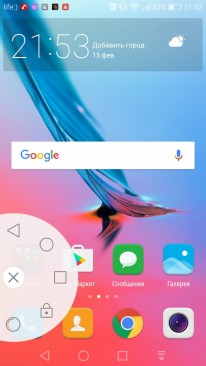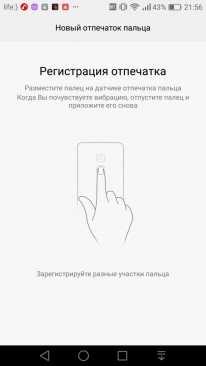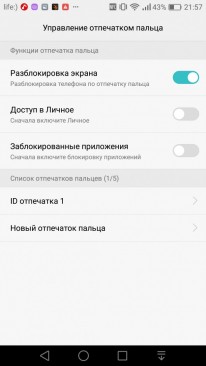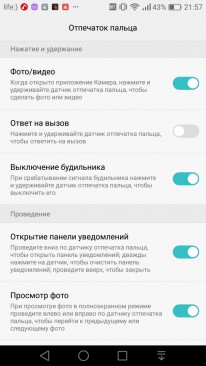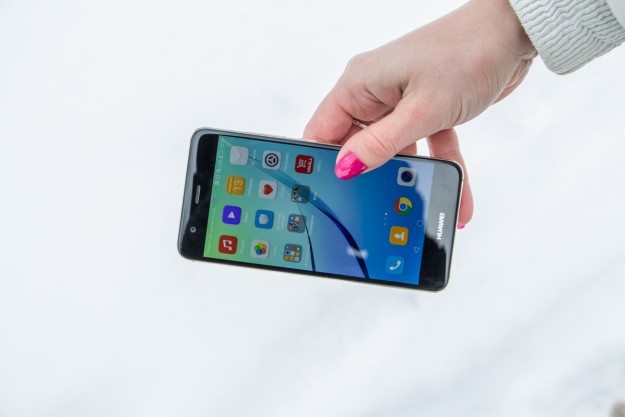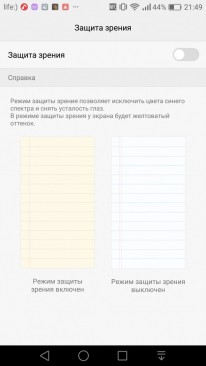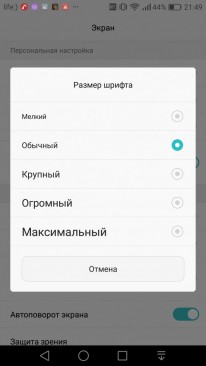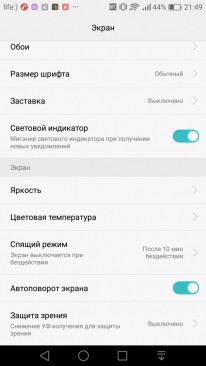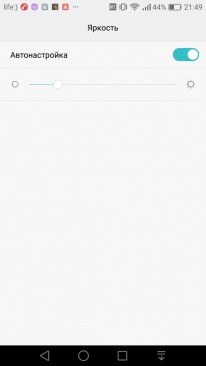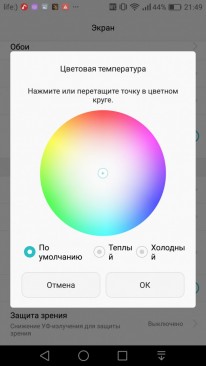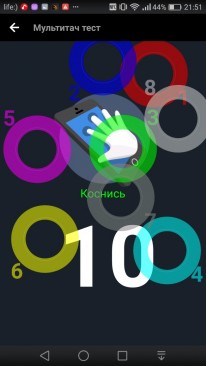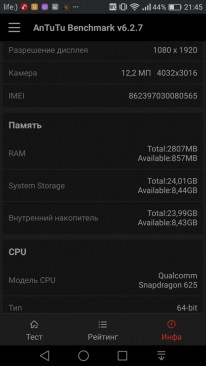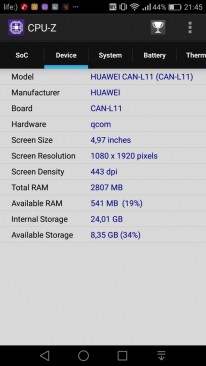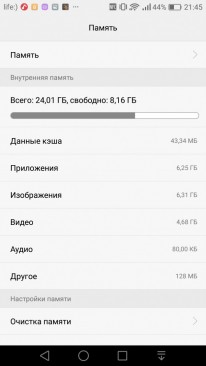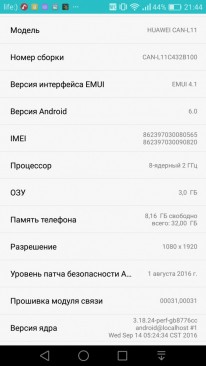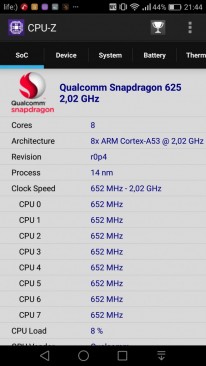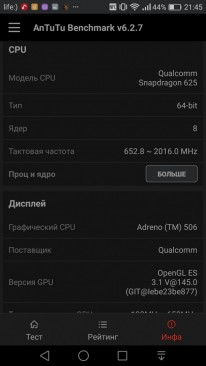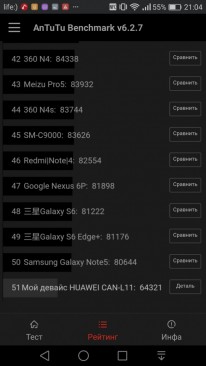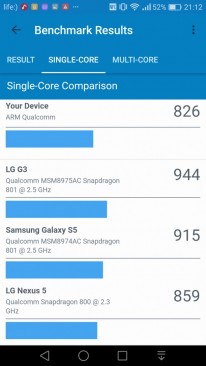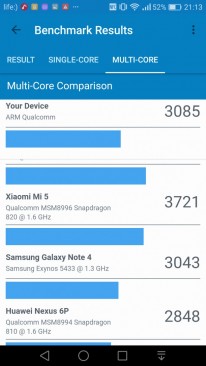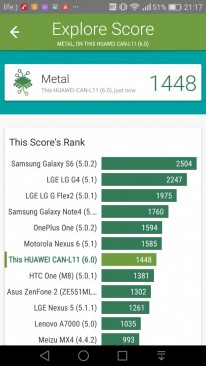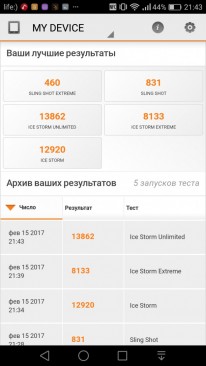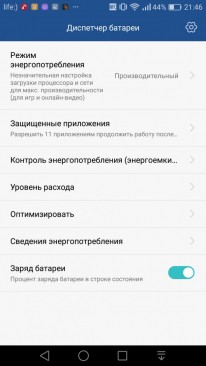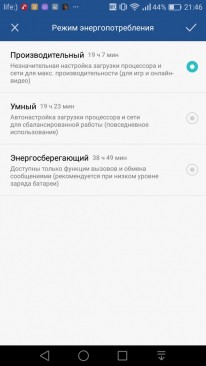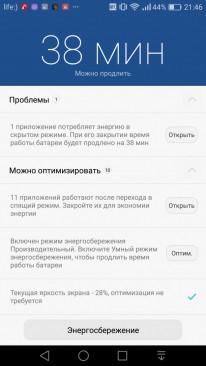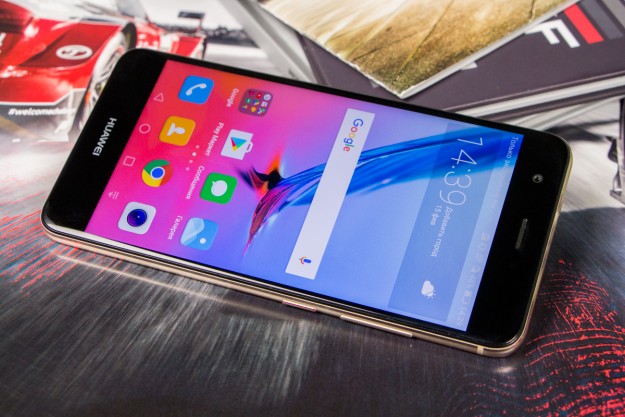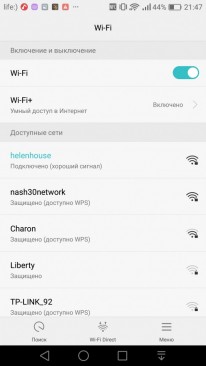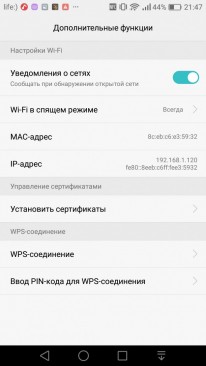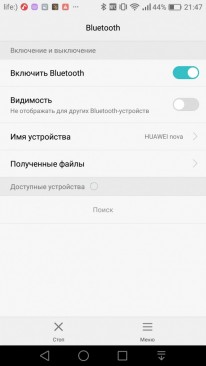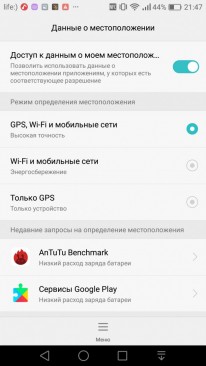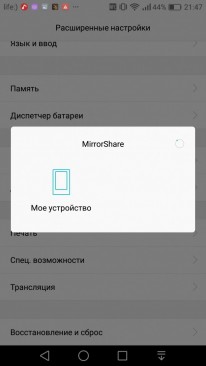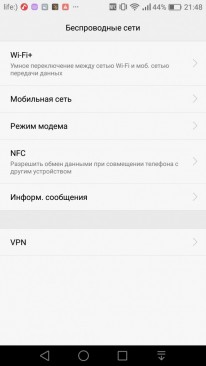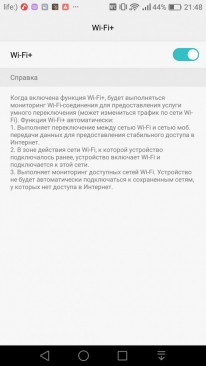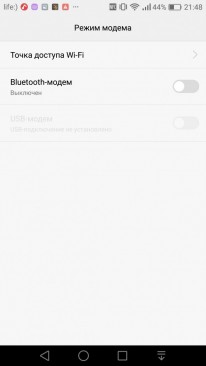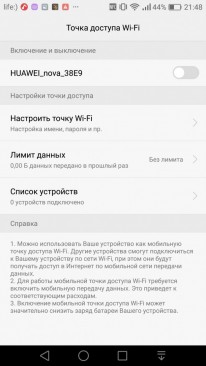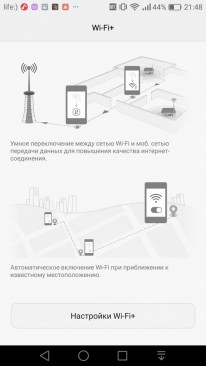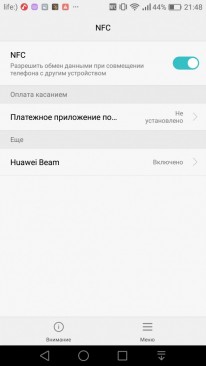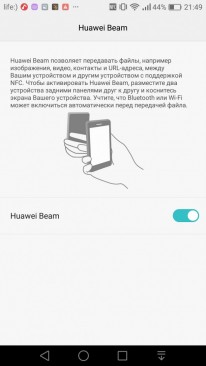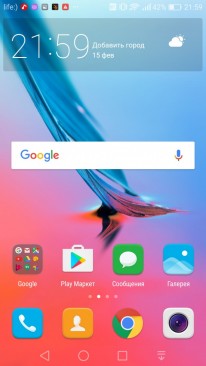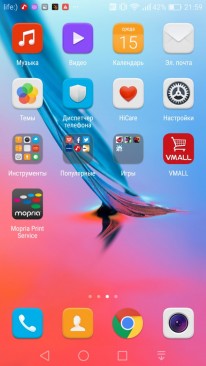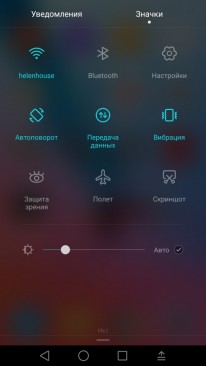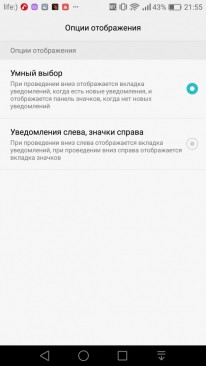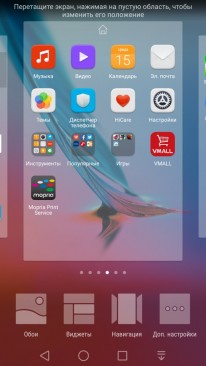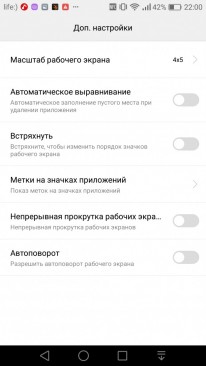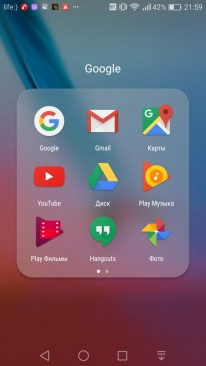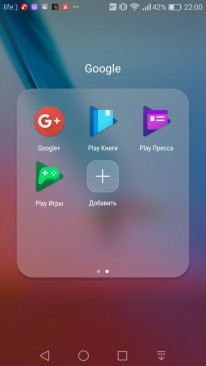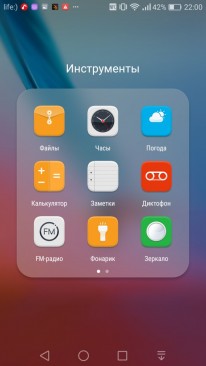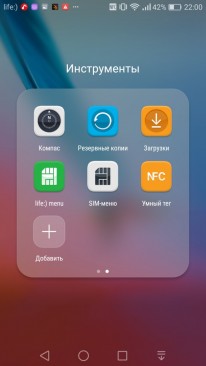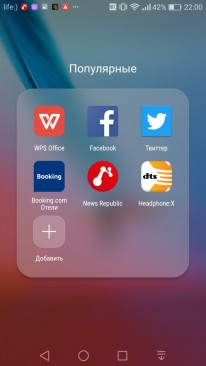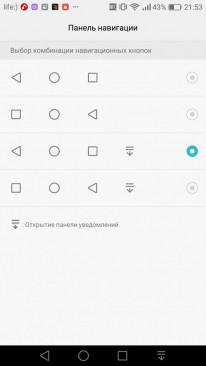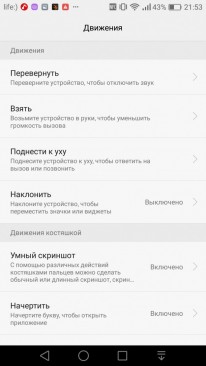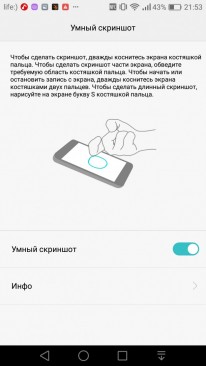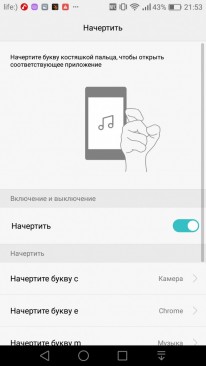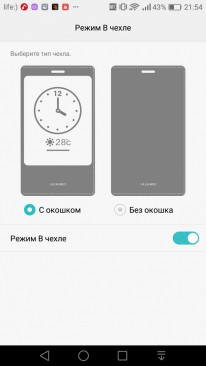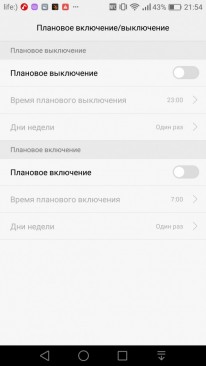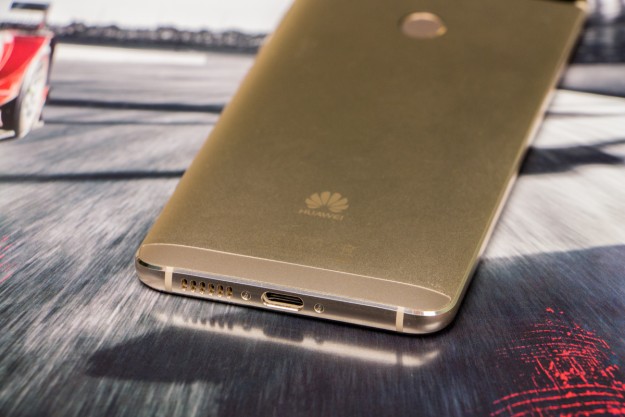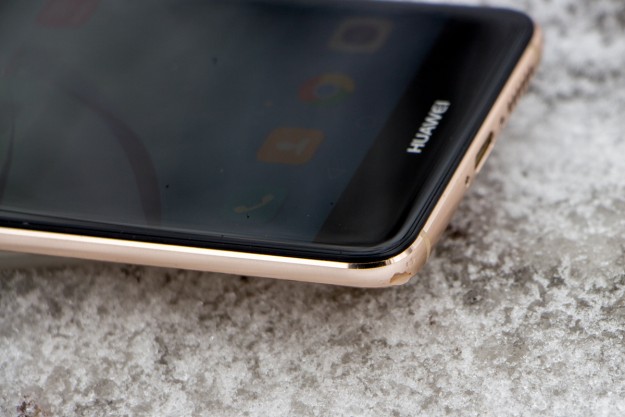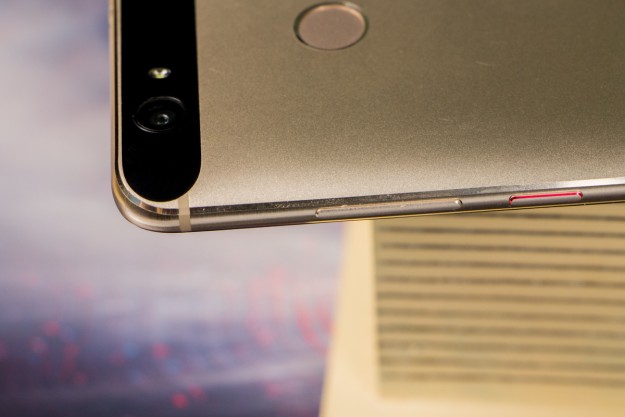For many people, phone size is a problematic issue. We can often experience discomfort when big smartphone presses in his pants pocket, and it looks pretty silly. But now most of the new models come with higher screen resolutions. And if someone is looking for a device with small dimensions, they can take a closer look at the model Huawei Nova.
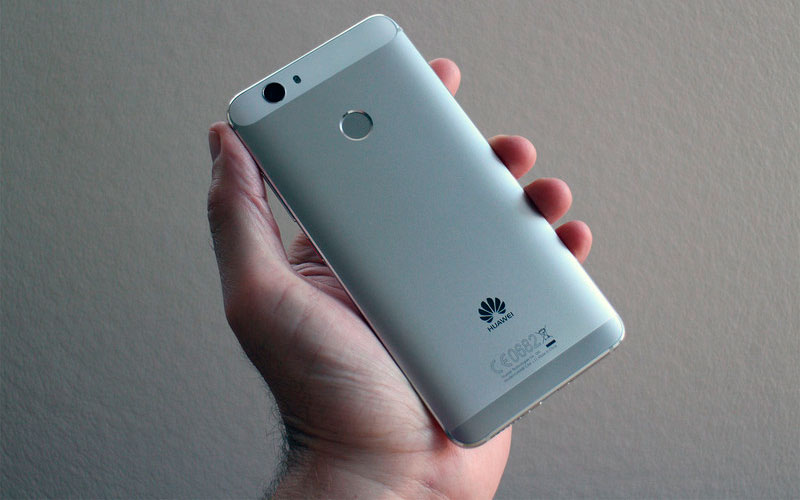
Huawei Nova Smartphone - Reviews
This is a 5-inch smartphone with Android base which has an attractive appearance and a practical metal body. This model is equipped with all the necessary technical characteristics modern user, although this is far from the most powerful phone of the Huawei family.
The new Huawei Nova smartphone has good characteristics and are intended for the middle class, which means that the price for it will be cheaper.
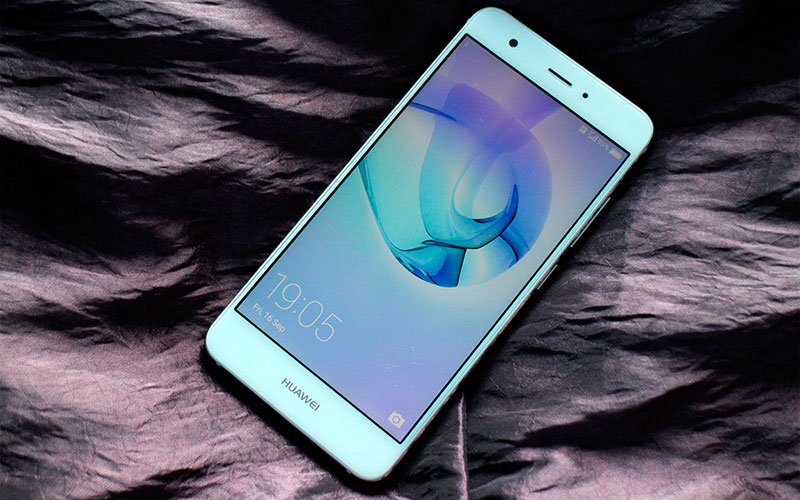
The gorgeous and small Huawei Nova
Huawei has proven many times how the appearance of a device can attract buyers with its beautiful design. The body itself is completely made of metal with a 5-inch screen and rounded edges. It is very convenient to hold such a smartphone. Nova is the perfect example compact smartphone.
If you look at the model more closely, you can see that the metal surface is covered with matte paint, and between the two plates is a layer of white plastic, which makes the appearance of the device similar to previous Huawei models. On the back there is a sensor for scanning prints. There is nothing on the front of the phone but front camera and the screen. It looks original.
It is also important that the model is distinguished not only by its compactness, but also by its lightness. It will be pleasant to carry the smartphone with you, and the user will not feel any discomfort.

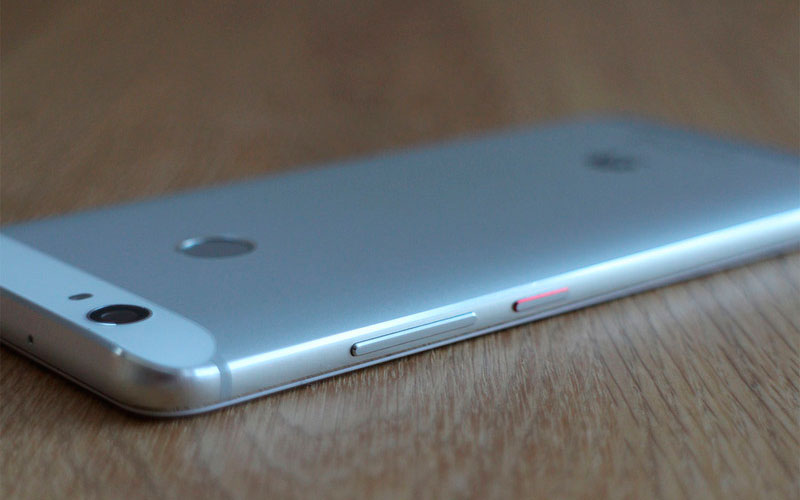
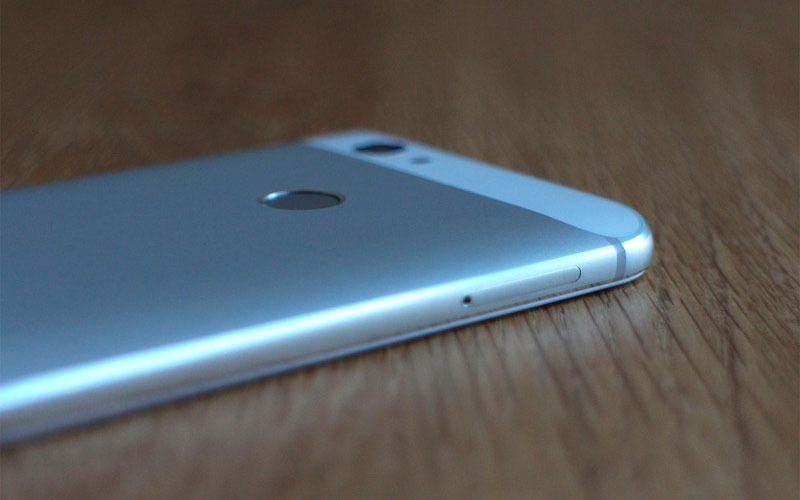
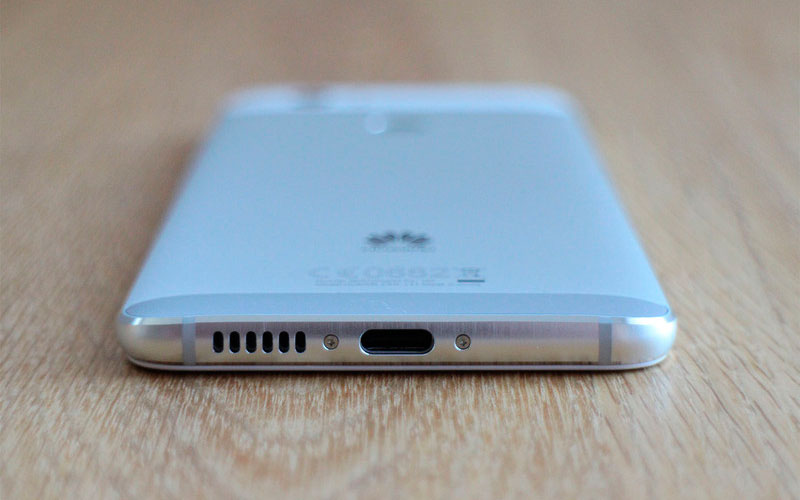
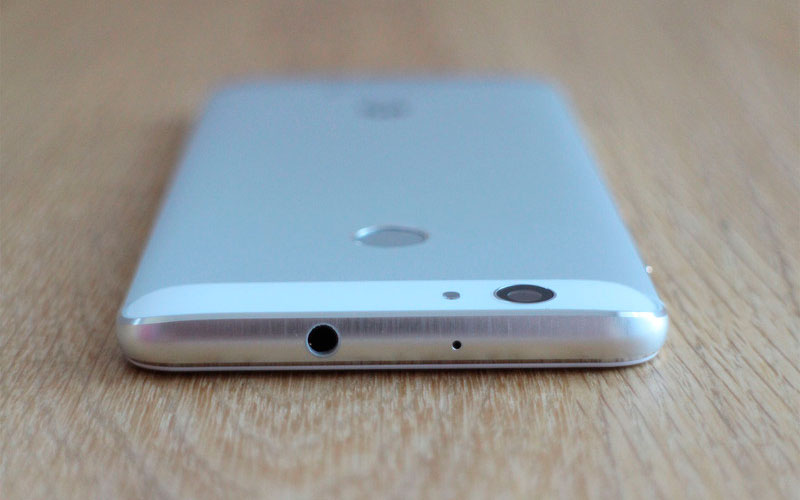
Display and interface
Despite its small size, Huawei Nova has a 5-inch LCD-IPS screen that supports a resolution of 1920 x 1080 px. Not all small phones can boast of such a display.
When working on the screen, there is a clear display of black textures, clear text, as well as bright transfusion of colors. All desktop wallpaper or video files look pretty realistic.
The Android 6 operating system interacts with Huawei's proprietary EMUI 4.1 interface. This means that menu icons will be located not only on the desktop, because the EMUI 4.1 shell has a number of flexible display settings. For example, in the upper part, you can configure the display of mail or attach application shortcuts, Wi-Fi and Bluetooth icons, and the brightness scales on the other.
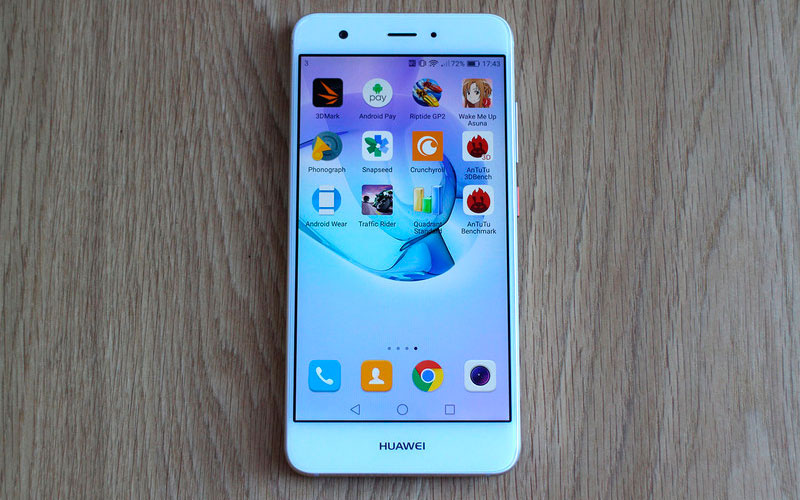
Some of the settings are really impressive. All notifications in the Huawei Nova smartphone are interactive. By clicking on the shortcut, you can immediately open desired application... In addition, the phone already contains installed applications, such as WPS Office, News Republic, etc. You can delete them if you wish. Nova has its own dispatcher designed to optimize device performance, includes cleaning unnecessary files, closing background programs, etc. There are also many Huawei proprietary programs in the phone, which can also be uninstalled.
The device has its own Swype keyboard, but sometimes its operation is annoying, so it is best to switch to another input application.
While the Nova smartphone is running, you can always go to the hidden menu to quit programs that the user is no longer using. The Knuckle Sense Huaw function is quite interesting, among its advantages is the ability to manually write characters, thereby activating this or that application on the monitor. For those who need to use the phone in the dark, there is a blue light filter for a more comfortable reading experience, and a new context menu on the lock screen speeds up the Huawei Nova's workflow.

System performance is acceptable. The Nova moves you very quickly through the menus and performs general operations on high speed... Huawei has not always produced such fast phones. The main thing to remember is that this is not a device for "extra tasks", this is an ordinary phone for taking selfies and playing minimally simple games, in such cases there will be no problems with functionality.
Performance, battery and safety
The battery life of the Huawei Nova is excellent. Although the battery packs a 3,040mAh battery, its performance is quite high due to the small size of the display. Tests have shown that the charge is enough for two days of active use. During testing, we used applications social networks, snapshots of photos and videos, and at night, the phone was in standby mode. In the morning, the battery was found to have 61% charge. For such a device, these are excellent performance.
New Qualcomm processor The Snapdragon 625 installed in the smartphone is designed to save battery life even when using the maximum amount of RAM. It is worth noting that the RAM in the device is 3 GB, and the disk space is 32 GB.
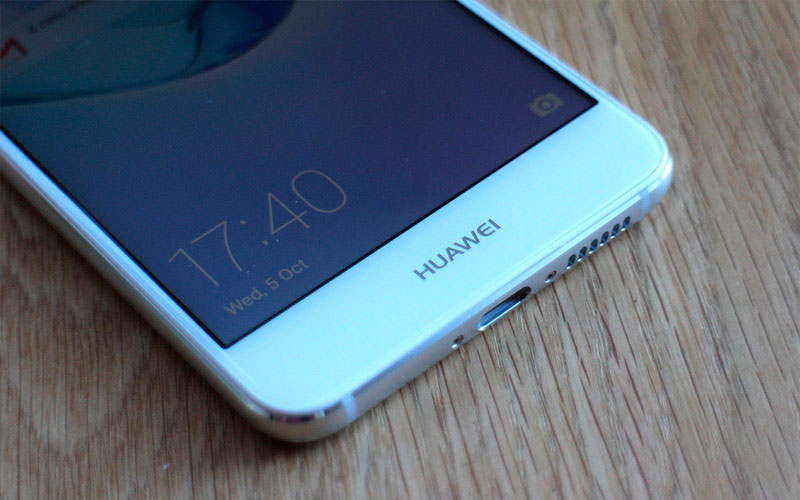
Thanks to the fingerprint scanner, the Nova becomes secure phone for data storage. Its work has been tested in several modes, it is worth noting that thanks to such protection, no one can use your smartphone. In addition, the model supports the Android Pay service, and Android 6.0, in the future, can be regularly updated. But, unfortunately, Huawei is not the fastest company to release new updates, although for many users this is not a problem.
Camera Huawei Nova
Huawei Nova has a 12-megapixel rear camera... According to the developers, their camera is distinguished by high sharpness and quality of images. The device is great for taking pictures of landscapes, nature, or taking selfies with the front camera. Several devices were used during testing, and the Nova is in no way inferior to the competition.
Some defects can be noticed when shooting in the dark. But, despite minor inaccuracies, the quality of the photo is generally satisfactory. A simple and intuitive interface will help you easily understand the camera settings.
As stated above, the 8MP camera will take the perfect selfie. Several modes help users select keyframes, adjust sharpness, mirror mode, and more.
All in all, Huawei cameras Nova does not stand out with something unsurpassed, but they are not inferior to competitors.
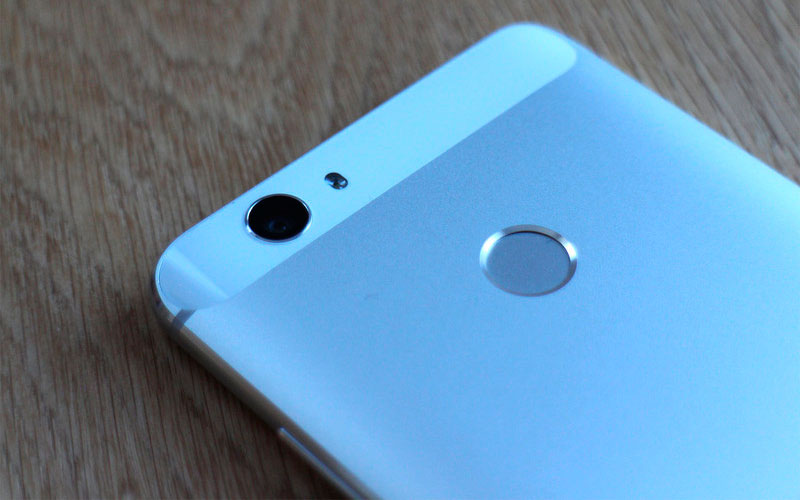
Outcome
The new Huawei Nova is a smartphone for the middle class of users, and those who are not ready to spend a lot. In terms of dimensions, it is a compact design with a durable metal case that will protect the gadget from damage when dropped. People who don't like big phones will appreciate the Nova's design.
The device is characterized by high-speed performance and reliability of saving personal data, the functionality has flexible settings, so everyone will be able to "correct" the interface to suit their requirements. The fingerprint scanner does its job perfectly, and the battery will last for two days of active use of the model. In addition, we tested both cameras and found that the performance was good even in challenging conditions.
If you are looking for a powerful and small phone for a reasonable price, then the Huawei Nova is definitely worth your attention.
Huawei Nova Smartphone - Video Trailer
If you find an error, please select a piece of text and press Ctrl + Enter.
The Chinese company Huawei has earned a huge reputation for itself by releasing successful and competitive flagships for several years in a row. The Ascend and Mate lines are well received by the market, but the manufacturers of the middle and budget segment do not succeed so often, often only the Honor subbrand contributes to success. A new device is called to correct the situation, the prospects of which will be determined by our review of Huawei Nova.
Price and main characteristics
The company positions its device as a middle-class solution, launching the model on sale at a price of 25,000 rubles and reducing it to 23,000 after a couple of months. In fact, Huawei Nova's pricing is completely identical to its main competitor - Samsung Galaxy A5.
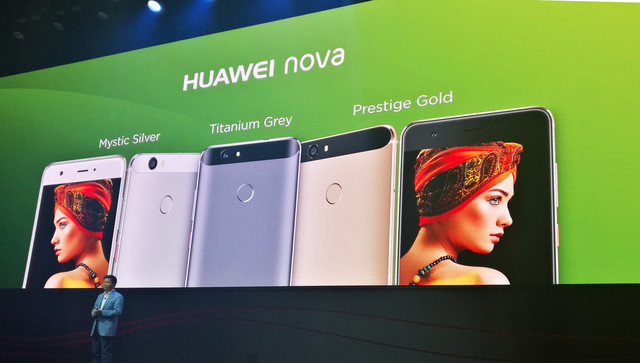
Specifications:
- display: 5 ", IPS 1920 x 1080 px, 441 ppi;
- CPU: Qualcomm Snapdragon 625 MSM8953 (8 x 1.4 GHz), video accelerator Adreno 506;
- RAM: 3 GB;
- internal memory: 32 GB;
- camera: main - 13 MP, front - 8 MP;
- communication: X6 LTE, Wi-Fi 802.11n, Bluetooth 4.1;
- battery: 3020 mAh, support Qualcomm Quick Charge 2.0.
The device comes pre-installed with Emotion UI (version 4.1). The most current firmware is based on Android 6.0.1. Recently, an update to Android N became available, which also included an EUI upgrade to number 4.2.
Completion and appearance
The package includes a traditional charging unit, a wired headset and USB cable(Type-C). Data transmission is carried out according to the relatively outdated 2.0 standard. Headphones with a microphone do not deserve the attention of audiophiles, but for unpretentious users, their capabilities will be enough. However, their very presence in the delivery set is good news - competitors in the price segment simply do not have such an option.
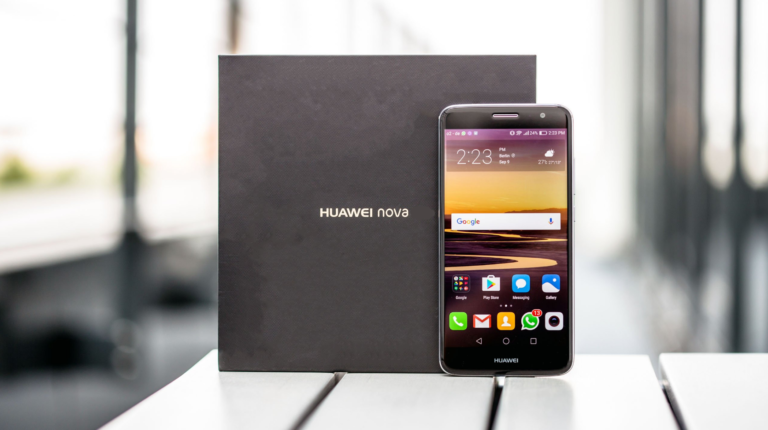
The case of Huawei Nova is made of aluminum, its design is skillfully borrowing (if not copying) the Nexus 6P: plastic inserts at the top and bottom of the back cover, the location of the fingerprint scanner and the camera eye. But compared to last year's flagship, the device has lost very wide frames, which, given the 5-inch diagonal, makes it very compact.
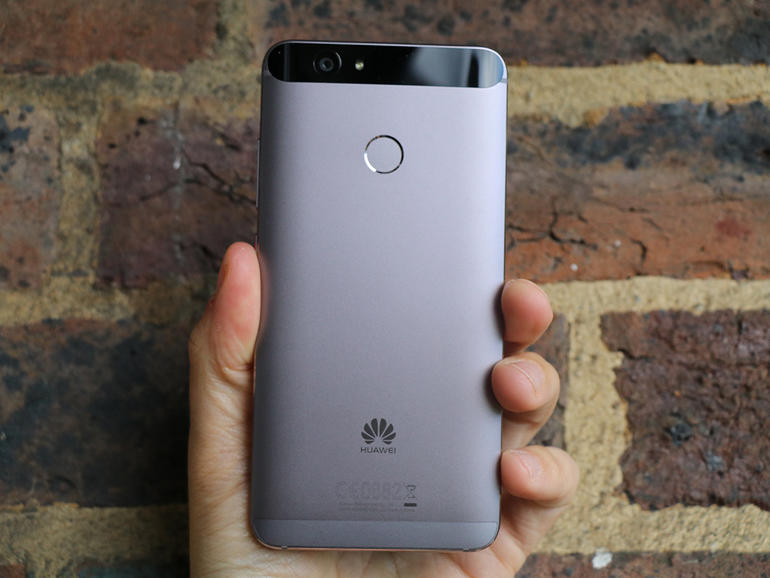
The sensors and the front camera are placed symmetrically with respect to the earpiece. The latter is placed in a small recess into which dust can theoretically clog - this design decision is controversial.
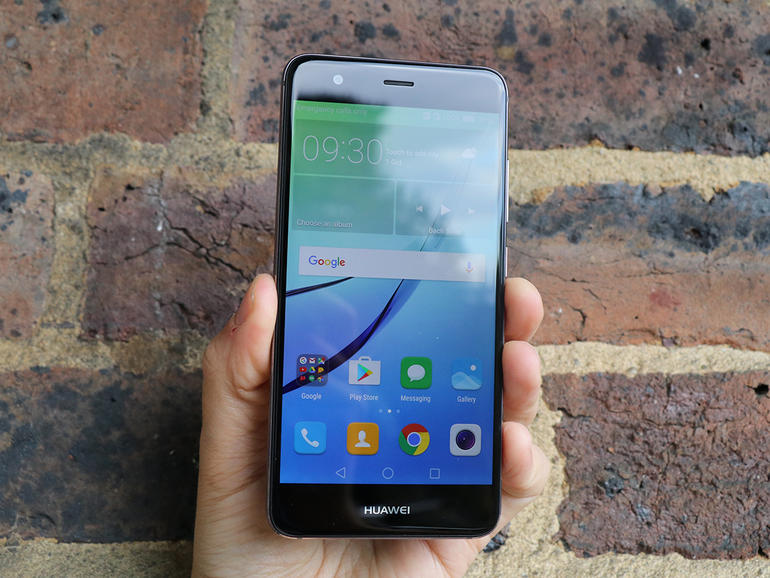
At the bottom of the 5-inch screen, which occupies 71% of the front panel, there is only the inscription "Huawei". The company remains true to itself and continues the trend: the on-screen buttons in the manufacturer's smartphones have completely replaced the touch buttons.
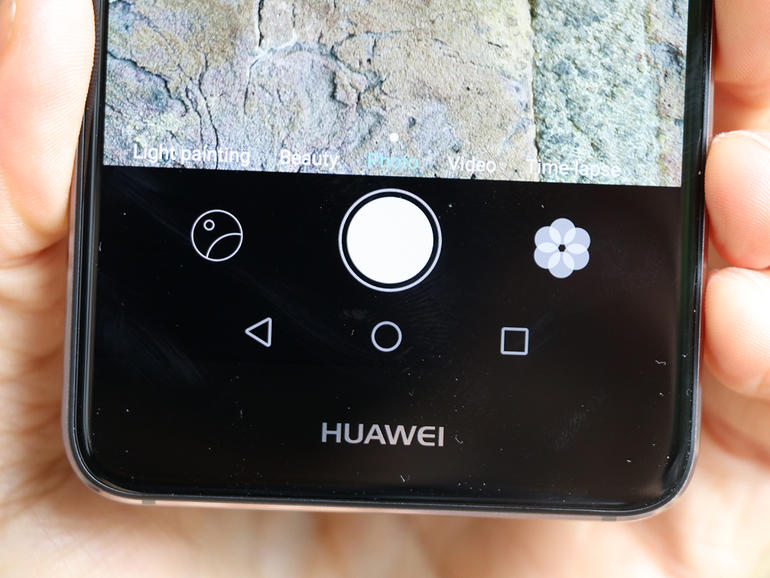
The top edge houses an additional noise canceling microphone and a standard audio jack.
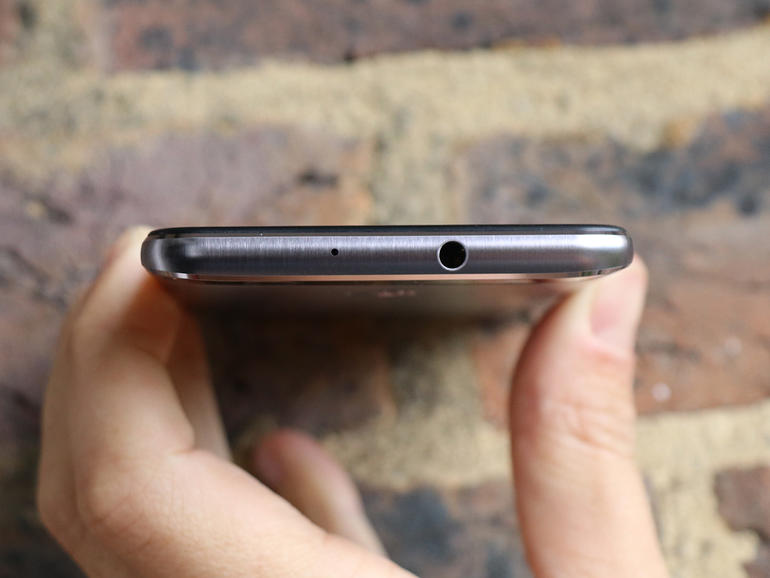
On the left side of the smartphone there is a slot for two nanoSIM cards, one of which is also suitable for installing microSD memory cards. On the other hand, the power and volume buttons are waiting for us - they are tight, they work well with pressing.
![]()
The camera eye is not recessed into the body, which can cause scuffs and scratches - this is a significant disadvantage. Also, one cannot fail to note a slightly soiled case, on which fingerprints remain. Nevertheless, the smartphone definitely deserves compliments in terms of convenience and tactile sensations.
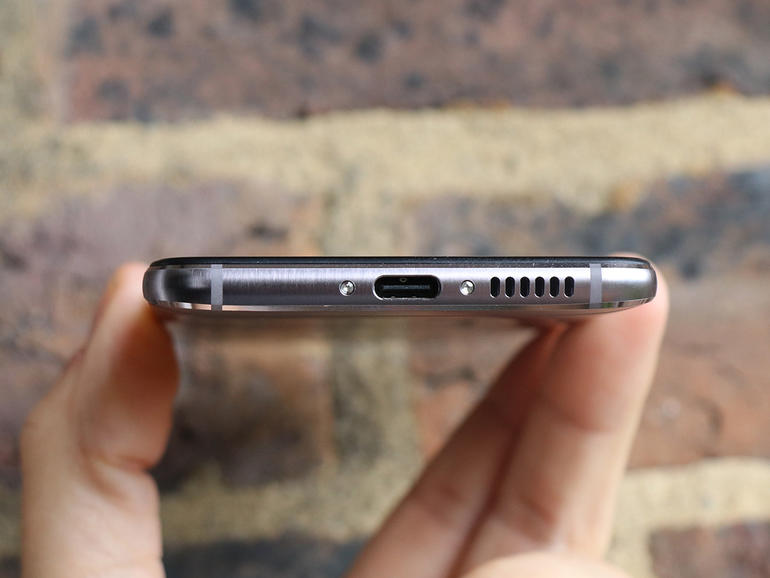
The first device that comes to mind when using the Huawei Nova is the iPhone 6, but it has a smaller screen for the same dimensions. Relatively narrow bezels, gently curved edges on the back, and metal make the smartphone experience a pleasant experience. The device does not feel cheap - the build and design could be called flagship, if we did not meet these same elements in last year's Nexus 6P.
Screen
The 5-inch IPS display matrix of Huawei Nova is commendable. First of all, it is worth noting the almost perfect white balance - compared to almost any smartphone Nova will give out a reference color, leaving behind most of the competitors.
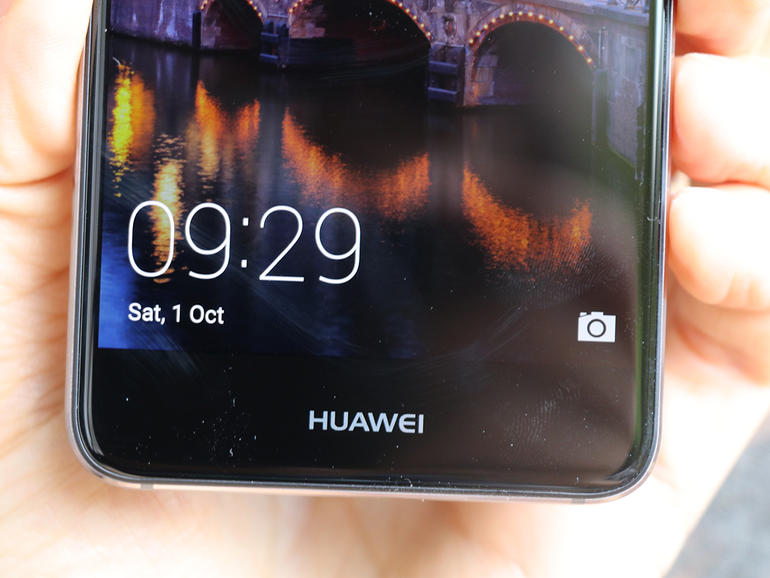
The pixel density of 441 per square inch closes the question of detailing - even small elements are perfectly drawn, there are no fancy fonts here at all. Loops behind objects on the matrix do not appear, which indicates that it belongs to at least the middle price segment.
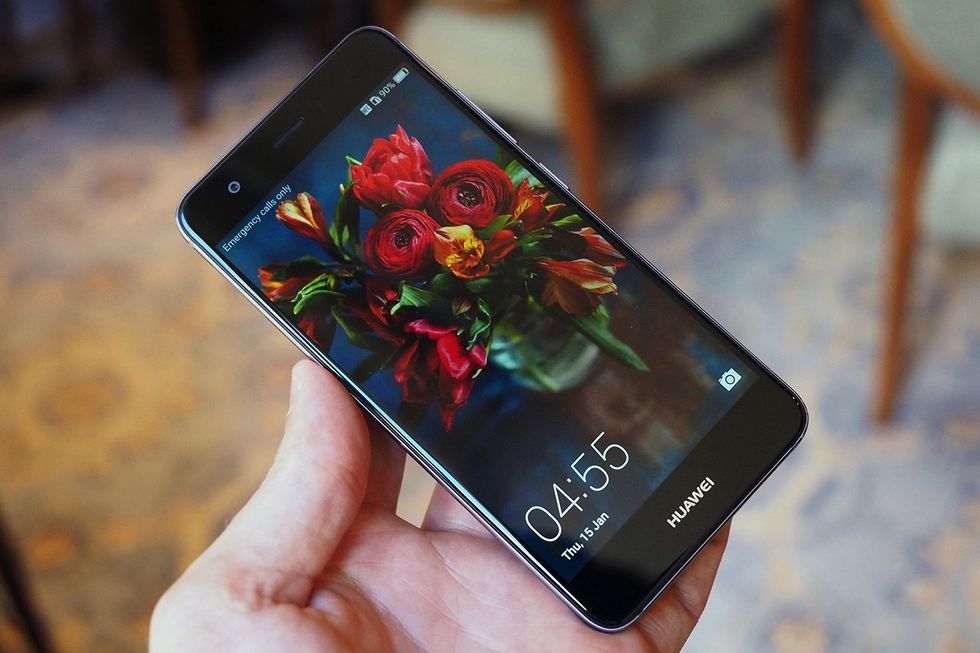
The screen could even be called a flagship, if not for the very weak viewing angles: when the device is deflected along any of the axes, the brightness sags more than on some cheaper devices. The matrix's readability in the sun is good, in the dark the minimum value is just enough for comfortable work.
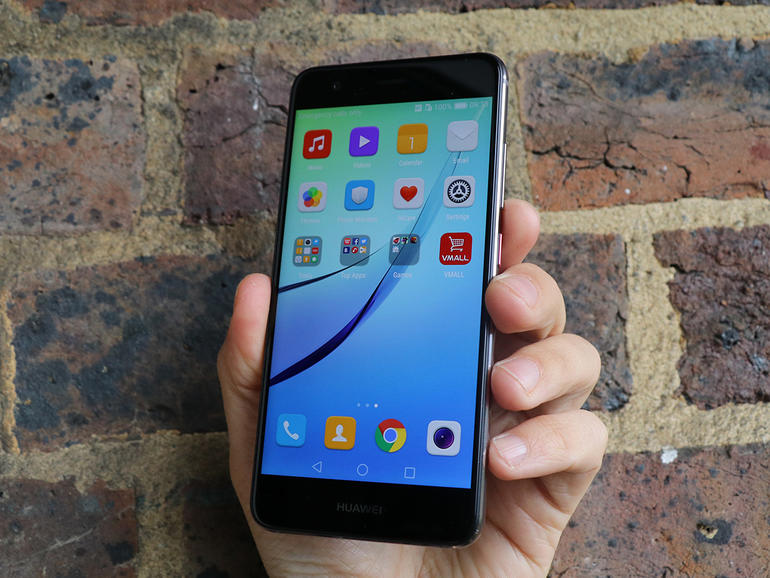
Questions raises and safety glass- its manufacturer is unknown, although for devices of this price category, the use of Gorilla Glass should already become a habit. For a short time of use, the screen was not covered with scratches, but how things will be in the future is unknown.
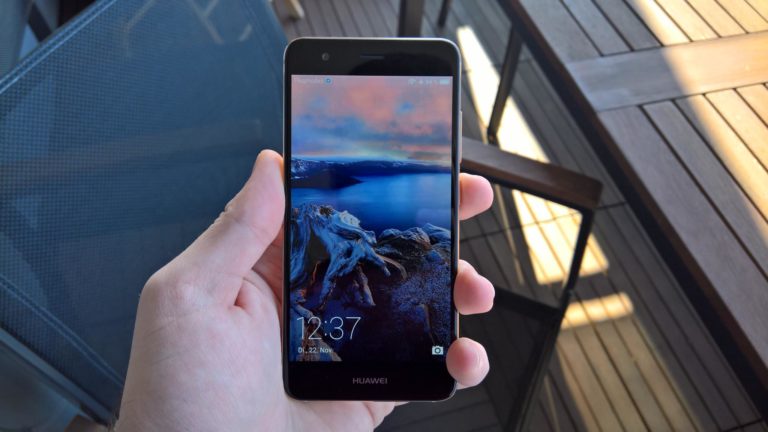
The oleophobic coating in Huawei Nova is good: fingerprints remain only in small quantities and can be removed with ease. Automatic adjustment is also available and behaves appropriately. A little frustrating is the lack of a gloved control mode.
Performance
The central processor of the device is a mid-budget platform from Qualcomm - MSM8953 or Snapdragon 625. The chipset is built on a 14-nanometer process, which, compared to the 28-nanometer Snapdragon 617, should provide a tangible increase in energy efficiency and performance.
The processor turned out to be successful: on all devices in which it was installed, the 625 was not subject to strong throttling and practically did not overheat. And Huawei Nova is no exception: the device behaves adequately under serious loads. The company acted wisely not to outsource the device to Kirin chips - in the middle price range, they still fail to play on equal terms with Snapdragon.
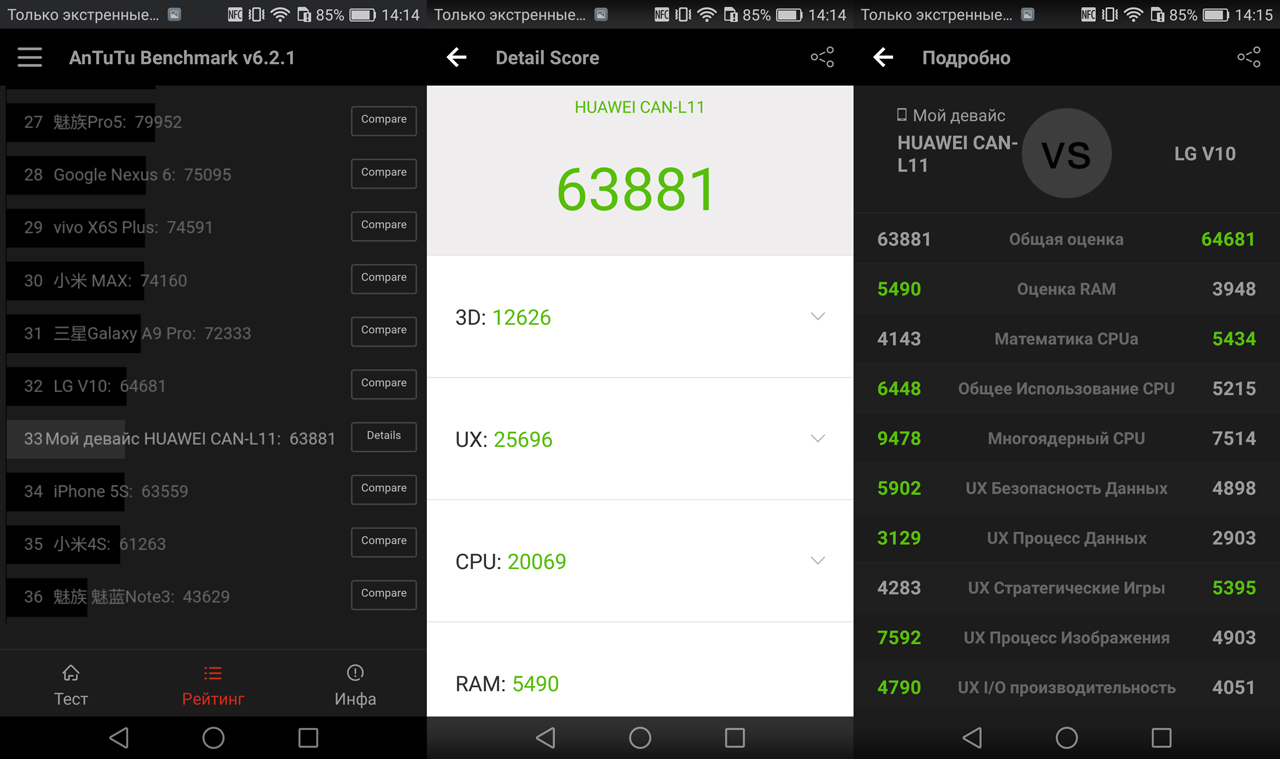
Separately, it should be said about the Adreno 506 video accelerator, which is inferior in performance only to the flagship 510. Its capabilities are enough to run almost any modern game at high graphics settings.
RAM in the device is 3 GB, after loading the system, about half of them remain free. The device works with its resources adequately - slowdowns are possible only in third-party applications, but the shell itself works perfectly. As a result, it turns out that the combination of the chip and RAM allows you to perform any tasks without upsetting the user with heating and performance drops.
Camera
At its presentation, the company paid much attention to the front camera - it has a resolution of 8 MP and an aperture of f / 2.2. The selfie camera produces high-quality images, comparable even to a number of flagship smartphones. For amateurs there is a card index of effects and additional options.
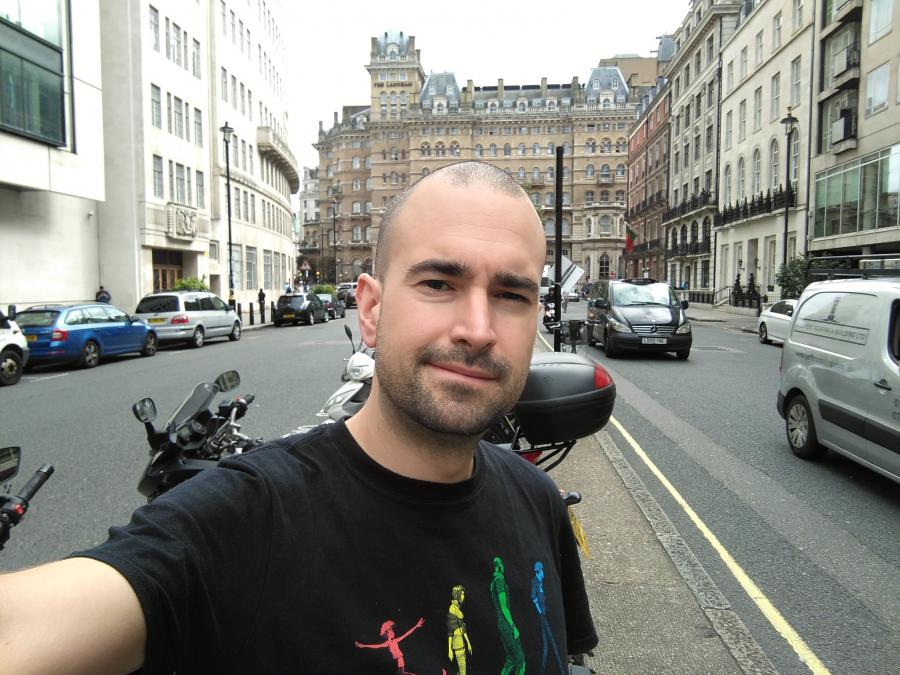
The main matrix has the same aperture, but its resolution is higher - 13 megapixels. On sunny days, she is able to take excellent pictures, and indoors and with a lack of light - only average. At the same time, the automation works extremely adequately, but in rare cases it can make mistakes with the exposure.



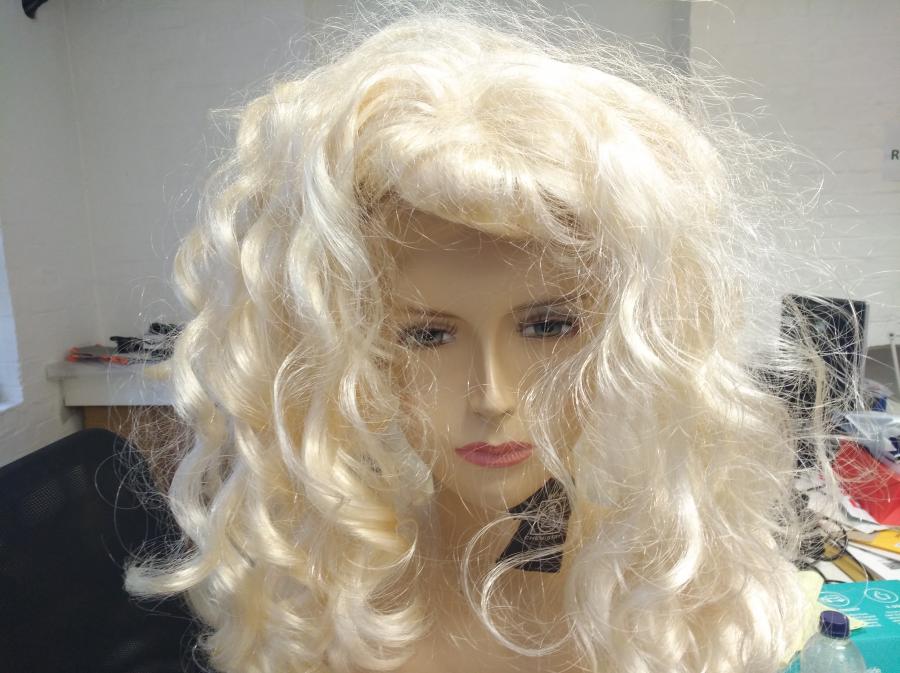
Video Huawei Nova shoots very good, one of the best in its price range (maximum resolution - 4K).
Speaker, sound quality
The external and spoken loudspeakers sound good, each of them has a small headroom. The sound in the headphones, on the other hand, may seem quiet to many - in this regard, the device resembles the same Nexus 6P. There are no complaints about the quality: all dynamic range smooth, all frequencies are well worked out.
Battery
A non-removable battery with a capacity of 3020 mAh in combination with a new processor provides good autonomy: at maximum load, the device is capable of producing at least four hours of active screen, which is the equivalent of a day of confident use (with a small margin). When you turn off 4G and notifications, Huawei Nova will easily conquer the mark in two days - in standby mode, the smartphone practically does not consume energy.
Communication and Internet
The device has an excellent set of communication capabilities: in addition to 4G, it supports traditional Bluetooth, Wi-Fi 802.11n and GPS, as well as NFC and Wi-Fi Direct, which are rarely found in the middle segment.
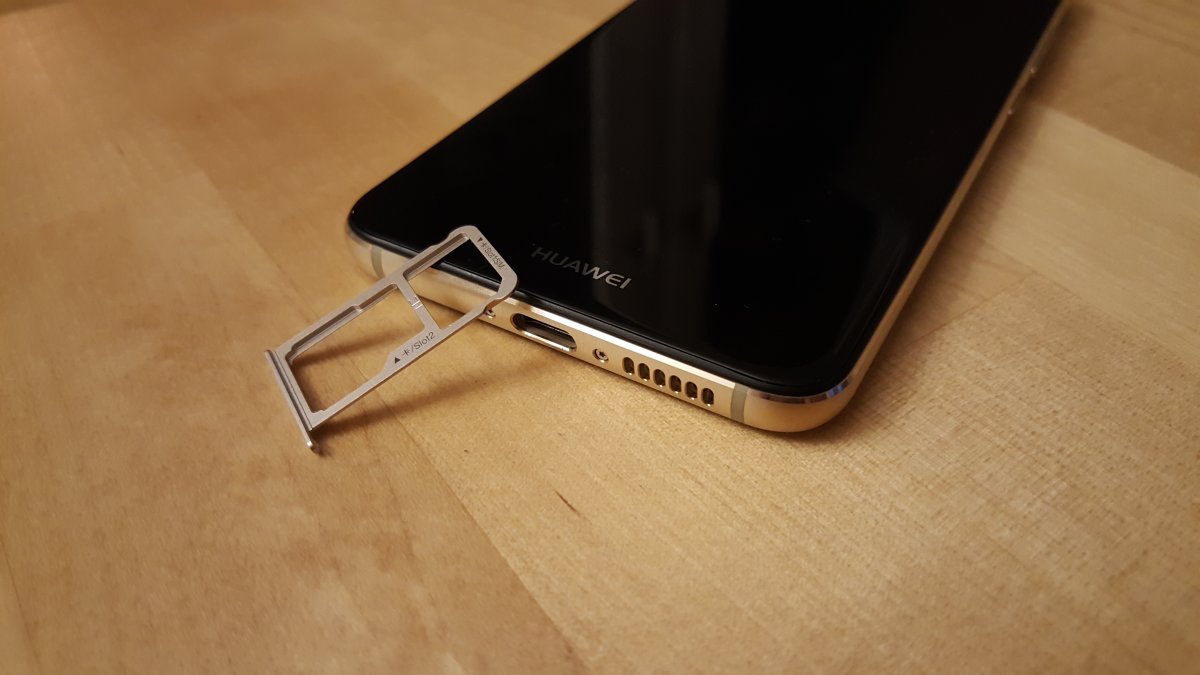
Cold start GPS takes less than five seconds - this is the merit of the new modem used in SoC Snapdragon 625. Support for LTE-networks is also the widest possible - here Qualcomm also has no equal.
Video review Huawei Nova
Competitors, conclusion
Among the direct competitors of Huawei Nova, the Asus Zenfone 3 and Nubia Z11 Mini S stand out. The first loses in camera and practicality ( back cover made of glass), the second wins slightly in the quality of images, but offers a less optimized shell. You can also highlight the Samsung Galaxy A5 (2017), but this device has more compromises: an excellent screen and good camera it compensates for the slippery and easily soiled body (which is important, with water resistance), as well as a small amount of RAM (2 GB).
You may also like ...
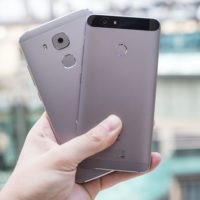
There are things that take root in Russia with great difficulty: tiny cars, baseball and fashion mobile phones. More precisely, there are exceptions among mobile phones: the iPhone in all its variety and, in extreme cases, the Samsung Galaxy A (and only since they became glass-metal). In other cases, overpaying for a "expensive, but beautiful" phone is not accepted in Russia, and examples from ASUS ZenFone 2 Deluxe, Htc one A9, LG Class clearly prove it to us.
Therefore, it was hard to believe that the Russians, angry with the prices of mobile phones during the crisis, would run after the middle peasants Huawei nova with 30-35 thousand rubles in their pockets, as predicted to us. No cool selfie cameras and new design will help if the mid-range models are priced like the 2015 flagships.
But Huawei also understands this very well. Therefore, with an estimated price of about 30 thousand, it simply did not come to Russian retail, and the younger nova fell in price even before the announcement. Instead of an advertising message, the model began to be presented as just a good mobile phone - more expensive than budget models, cheaper than flagships and more affordable powerful versions of Honor. Whether “neither masterpiece nor bad” Huawei turned out to be the golden mean, or vice versa, “no” smartphone, we will find out today.
Specifications
|
Huaweinova |
|
|
Operating system |
|
|
Screen |
5 ", 1920x1080, IPS, 441 ppi |
|
CPU |
|
|
Graphics |
|
|
Persistent memory |
32 GB, microSD slot |
|
Connection |
4G, 3G, Wi-Fi (IEEE 802.11 b / g / n), Bluetooth 4.1, GPS, GLONASS, NFC |
|
Cameras |
main: 12 MP, with autofocus, video recording 3840x2160, |
|
Battery |
3020 mAh, non-removable |
|
Dimensions (edit) |
141.2x69.1x7.1 mm |
|
Weight |
|
|
Price at the time of publication |
23,000 rubles |
|
Where can I buy |
Spit call: 2801 3 inline |
Design and management
I didn't think I would ever say this to a 5-inch mobile phone, but how small it is! Even the 4.7-inch iPhone isn't that big, and most non-phablets are even bigger. Partly because Huawei finally had the courage to make the side bezels thinner (and the damn black screen bezel isn't that huge here). But do not forget that in an attempt to squeeze "another piece of the screen" into the display, manufacturers have spawned overgrown models with diagonals of 5.2, and sometimes 5.3 inches.
Our hero is smaller than any of these competitors, and for everyone except those who like to watch videos, this is a plus - the body gets in the way less when the smartphone is in trousers, and you don't have to spread your palm for a more comfortable grip. And I'm not exaggerating - I myself was surprised how much more convenient and safe it is to hold a smartphone of moderate width in your hand.
And the design is also funny with references to (which Huawei also created) and the flagship P9 at the same time. At the same time, in comparison with the "googlephone" nova no longer looks like a cub of a periscope and a price tag scanner in a supermarket, and the volume swing is not confused with the power key. And the fingerprint scanner, although not bad in itself, is somehow unusually tiny.
A compact 5-inch mobile phone with a design similar to the Nexus 6P. Very nice
In general and on the whole - a pleasant phone with an average (so that everyone would like it for sure) appearance. By the way, the polished metal on the side faces is beautiful and even less slippery than its counterpart on the lid. But the plastic insert at the rear camera looks solid only in the black color of the smartphone - in the white version it looks all the same oilcloth covered with glass, as in. And it's still not clear why the goblin needed to endow the power key with a red tint? It looks like the creativity of a schoolboy who painted his mobile phone with felt-tip pens.
Screen and sound
Get hold of Full HD resolution display today can be in smartphones costing from 9000 rubles, but this "economy class" always has drawbacks when it comes to contrast, viewing angles or color reproduction. Truly high-quality matrices of 1080p format are becoming the rule in models costing 20 thousand rubles and more.
There is practically nothing to complain about in the Huawei nova display - the brightness is enough, the contrast is solid, the color gamut is almost the same as the reference for the sRGB palette, the color accuracy is low, and the viewing angles are excellent. But the color temperature is traditionally skewed for mobile phones in cold shades. This, of course, is fixable (you can adjust the white balance in the display settings), but the tradition of "pouring" bluish shades into white on phones is even more idiotic than a hybrid slot for one and a half SIM cards.
The speaker in nova is loud, sharp and squeaky, that is, the music is not reproduced by God knows how. But, if you do not put some "heavy" or just a composition stuffed with details on the ringtone, it is suitable for calls and videos on YouTube.
The screen is very high quality, but the sound is upsetting even with all the "enhancers"
But in the headphones, the sound, on the contrary, is not very detailed - as if a low-quality track is playing in an audio player and you need to mask the metallic overtones at a low MP3 bitrate). At low and medium volumes, this fact, however, is not annoying - Huawei could not squeeze out higher details, but at least it does not ring in the ears from high frequencies. But at high and maximum volume, the reasons for optimism diminish.
Yes, everything is in order with the volume, the volume is also sufficient, but the dirty sounding is more evident to the ears. Low frequencies are lacking, and the rest merge into a mess, as if I again took a cassette with Metallica from Tolyan, made a copy of it on my Chinese tape recorder and listened to it in a cassette player. This is with regard to the sound quality in the monitor headphones. In gags with their tendency to inflate low frequencies the sound is more balanced and even, although the taste of low bitrate does not disappear anywhere.
At the same time, the smartphone has a DTS Headphone: X sound manager, but it only serves the standard "Music" application and does not in any way affect the sound in third-party software. Therefore, VKontakte / Yandex.Music / YouTube music will sound equally disgusting.
But in a standard audio player, the sound can be slightly improved if you switch the "stereo mode" to the "traditional" position and from the presets for the Honor / Huawei headphones choose the standard one - "plug-in headphones" (yes, it is suitable for large headphones too). Because not a single preset is ideal for high-impedance "monitors", but in vacuum "plugs" with such a preset, the sound will become quite clean and even - the same as it should be in the original version for Snapdragon 625.
For some reason, a ZenFone 3 with a similar hardware base sounds appropriate without any tweaking. But thanks for the fact that at least for vacuum headsets, the sound in nova can be brought to the appropriate level - nova Plus, for example, does not provide such luxury to customers at all.
Iron
I actually see in reality how Antutu fans run into comments and are outraged that a smartphone with a "budget" processor costs more than 20 thousand. And I know the reason for such indignation: the parishioners of the Xiaomi sect have found out that the Chinese have talked to Qualcomm for the supply of Snapdragon 625 for the budget Redmi 4, which costs less than 10 thousand rubles in the basic version. The fact that all other smartphones with the same "stone" are estimated at 23-30 thousand, these ardent guys are not at all embarrassed.
Only the song is not at all about how Qualcomm got along with Xiaomi. And not about records in benchmarks, because in the "wild" Snapdragon 625 has a different role - there are 650th and 652nd models for powerlifting. And the eight-core processor overclocked to 2 GHz on the old Cortex-A53 cores was designed for fashion smartphones, the owners of which only need the handset "not to slow down for no reason."
The Snapdragon 625 is definitely not the king of benchmarks, but it is very fast in practice. Everyone but the desperate geeks will have enough
And for those who like to run applications in batches, the 625th is ideal - messengers, browsers and other joys work quickly and responsively, and the case does not heat up at the same time (the 14 nm process technology contributed). The performance in games cannot be called outstanding and it will not always be possible to play at maximum detail, but at standard settings the games will start and work without problems. I do not see a single scenario in which the performance of the Snapdragon 625 would not be enough for ordinary users.
Software
With a Huawei smartphone, you will always know what Poroshenko said and how Peskov commented on it, because the first time you connect to the Internet, Mail.ru news will start pouring into the notification blind. If you do not prevent them from issuing notifications, you will have to uninstall the application in a separate order.
The smartphone also offers Booking.com applications (hotel booking service), TripAdvisor travel service, Opera browser, Sberbank application, ivi.ru cinema, Odnoklassniki social network client in the category “may not be useful to you, but we paid for accommodation”. .. All this stuff can be removed, but the sediment, you know, remains.
The branded shell is pretty, but teeming with useless "paid" applications
Of the "bells and whistles" characteristic of the EMUI shell, one can note support for gestures using the smartphone itself (turned it over during a call - turned off the sound, etc.) and gestures on the fingerprint scanner, similar to those that can be done on a laptop's touchpad. The system works quickly, I don't want to find fault with the already far from the freshest Android 6.0 - everything is convenient and ready for daily use already "out of the box".
Cameras
The nova camera is based on a rather cool Sony IMX286 sensor (as in Honor 8) / Huawei P9), and the functionality of the cameras is all right - our hero, unlike most middle-class competitors, can shoot 4K video and is armed with a hybrid autofocus (phase contrast focusing methods). But there are only 12 megapixels in the camera, although more, in reality, is not needed.
In other nuances, the cameras are only encouraging - focusing is fast, pictures are saved instantly, the smartphone almost never makes mistakes with white balance or exposure and copes well with close-ups. The situation with video is somewhat worse. Strange, but the quality of video shooting is the old Galaxy A5 (2016) (less "peas" of digital noise in the frame), but Huawei is better sees in the dark and gives out more detail in videos during the day.
The cameras are quite good, although they occasionally unpleasantly surprise when shooting at night.
The front camera is close to ideal - it captures the physiognomy in every detail. And if you want less details, there are several beautification modes in the settings - from removing, sorry, scars and pimples from a photo to makeup. In general, so that the owner should be both beautiful and unpainted, and not like in a song.
Even in comparison with the Samsung Galaxy A5 (2016), which got an economical AMOLED screen with almost the same battery capacity, nova looks good. But the 5.2-inch ZenFone 3 ZE520KL with the same load and only 2600 mAh battery lasts longer - in all likelihood, the effect is much lower power consumption of the display in ASUS.
Not the most durable mobile phone for 5 inches and 3000 mAh, but nothing to complain about
And it is also upsetting that despite the new Snapdragon inside, nova was deprived of support for fast charging - in order to charge the smartphone from zero to 100%, it will take a little more than 2.5 hours.
Competitors
|
Huaweinova |
ASUSZenFone 3 (ZE520KL) |
Samsung Galaxy A5 (2016) |
||||||||||||||||||||||||||||||||||||||||||||||||||||||||||||||||||||||||||||||||||||||||||||
|
Operating system |
||||||||||||||||||||||||||||||||||||||||||||||||||||||||||||||||||||||||||||||||||||||||||||||
|
Screen |
5 ", 1920x1080, IPS, 441 ppi |
5.2 ", 1920x1080, IPS, 424 ppi |
5.2 ”, 1920x1080, Super AMOLED, 424 ppi |
|||||||||||||||||||||||||||||||||||||||||||||||||||||||||||||||||||||||||||||||||||||||||||
|
CPU |
Qualcomm Snapdragon 625 MSM8953, 8 cores (8x Cortex-A53 2.0GHz) |
Qualcomm Snapdragon 625 MSM8953, 8 cores (8x Cortex-A53 2.0GHz) |
Samsung Exynos 7580, 8 cores (8x Cortex-A53 1.6 GHz) |
|||||||||||||||||||||||||||||||||||||||||||||||||||||||||||||||||||||||||||||||||||||||||||
|
Graphics |
||||||||||||||||||||||||||||||||||||||||||||||||||||||||||||||||||||||||||||||||||||||||||||||
|
Operationalmemory |
||||||||||||||||||||||||||||||||||||||||||||||||||||||||||||||||||||||||||||||||||||||||||||||
|
During the autumn IFA 2016 exhibition in Berlin, Huawei presented a pair of smartphones absolutely new series, which received the laconic and self-explanatory name Nova. The first representatives of this line were the devices Huawei Nova and Nova Plus, and during their presentation, the representatives of the company made it clear that Huawei is now in the most determined position to take a serious fight in the mid-price range. It so happened that the first to get our review was the older model, Huawei Nova Plus, as the most technically interesting. However, it later turned out that on Russian market she will not be officially present. But the main model, the usual Huawei Nova, is already supplied to us, and now it's time to examine it in the most detailed way. If we talk about the positioning of the novelty, then, according to the representatives of the company themselves, this is “the first gadget in the nova series of devices located at the junction of the middle and premium price segments. The focus of this series is to provide the customer with a range of advanced features and technical benefits at an attractive cost. ” Main characteristics of Huawei Nova (model CAN-L11)
Appearance and usabilityFor the design of the two smartphones of its new Nova line, Huawei has chosen different images, so the Nova and Nova Plus models are not alike. Although, of course, there are parallels with other models ever produced by the company. And if the Huawei Nova Plus is practically spitting out in appearance, then for today's hero it was chosen as a prototype of the Nexus 6P, released a year ago, but still a very powerful, top-end device produced by a Chinese company for the Google Nexus series.
Huawei Nova is almost identical in design to the Nexus 6P - adjusted for dimensions, of course. If that device was the personification of a real tablet phone, possessing a huge 5.7-inch display, then here, on the contrary, the smartphone turned out to be almost miniature. And miniature things are known to be much more graceful, so all the elements scaled down proportionally here look even more attractive.
This small five-inch smartphone in an all-metal streamlined matte casing with beautiful, nobly shiny side bevels not only looks very attractive, stylish and expensive, but also feels and holds in the hand with great comfort. The case is not easily soiled and not slippery, not large and not heavy. The device turned out, without exaggeration, very interesting in appearance.
Naturally, there are no complaints about the assembly and the quality of materials - the case is monolithic, almost entirely made of metal, with the exception of a pair of dielectric inserts on the back, made of plastic.
The top of the panels on the back side houses the main camera module and a flash, consisting of only one LED, but extremely bright. Slightly below is a fingerprint sensor platform, which traditionally for Huawei smartphones not only implements the fingerprint authorization function, but also acts as an additional control element.
By placing your finger on the scanner pad, you can shoot a selfie camera, answer incoming calls, turn off the alarm, call and hide the notification panel, and even scroll through photos in the gallery. The scanner is slightly recessed to make it easier to blindly feel it with your finger. Although if the device is lying on a table or standing in car holder, then you won't be able to find anything there.
The front panel is completely covered with 2.5D protective glass with sloping edges. On a small body, its beveled edges are more noticeable than on huge areas of large tablet phones, so the device really looks and feels streamlined due to such glass, here 2.5D glass is used very handily.
In the upper part above the screen there is a complete set of necessary elements: proximity and lighting sensors, a front camera peephole, an earpiece, as well as a useful LED indicator of events.
In the lower part under the screen there are no touch-sensitive hardware buttons, the buttons are virtual, on the screen, and in the settings you can change the order of their arrangement at your discretion.
The side card slot is universal: one of the slots is for Nano-SIM cards, the other is for Nano-SIM or microSD memory cards. Hot swapping of cards is supported.
The side buttons are located on the right side, they are made of metal, rather large and have, perhaps, a slightly stiffer stroke than we would like. But on the other hand, they are easily found blindly, and visually differ, since one of them has a red bevel.
At the bottom there is a USB Type-C connector, it supports connecting flash drives in USB OTG mode. Next to this connector is a grill that covers the speaker. The smartphone sounds very loud, the sound is pleasant to the ear, rich, thick and clear. With its help, you can not only hear the call signal well, but you can also listen to music, and even for video games, such a high-quality soundtrack is more than enough.
The top end is customarily given over to a 3.5 mm headphone jack; here you can also find the opening of the second, auxiliary microphone.
The smartphone is available in three colors: light silver, dark gray and gold. The light version has a white front panel under the glass, while the other two have a black one.
ScreenHuawei Nova is equipped with an IPS display and is covered with 2.5D glass with sloping edges. Its physical dimensions are 62 × 110 mm with a diagonal of 5 inches. The resolution is 1920 × 1080, the dot density reaches 443 ppi. The frame around the screen is not thick, it has a width of 3 mm on the sides and 15 mm at the top and bottom. The brightness of the display can be manually adjusted or rely on automatic settings based on the operation of the ambient light sensor. The AnTuTu test diagnoses support for 10 simultaneous multitouch touches. Mode of operation with gloves is supported. There is a possibility of manual adjustment of the color temperature, you can also separately activate the mode with a "blue filter", in which the colors go into warm yellowish shades.
A detailed examination using measuring instruments was carried out by the editor of the "Monitors" and "Projectors and TV" sections Alexey Kudryavtsev... Here is his expert opinion on the screen of the test sample. The front surface of the screen is made in the form of a glass plate with a mirror-smooth surface, resistant to scratches. Judging by the reflection of objects, the anti-glare properties of the screen are no worse than those of the Google Nexus 7 (2013) (hereinafter simply Nexus 7). For clarity, here is a photo in which a white surface is reflected in the turned off screens (on the left - Nexus 7, on the right - Huawei Nova, then they can be distinguished by their size):
The screen of the Huawei Nova is noticeably darker (the brightness in the photos is 110 versus 118 for the Nexus 7). The doubling of reflected objects in the Huawei Nova screen is very weak, which indicates that there is no air gap between the layers of the screen (more specifically, between the outer glass and the surface of the LCD matrix) (OGS-type screen - One Glass Solution). Due to the smaller number of boundaries (such as glass / air) with very different refractive indices, such screens look better in conditions of intense ambient light, but their repair in the case of cracked outer glass is much more expensive, since the entire screen has to be changed. On the outer surface of the screen, there is a special oleophobic (grease-repellent) coating, which is better in efficiency than that of the Nexus 7. Therefore, fingerprints are removed much more easily, and appear at a slower rate than in the case of ordinary glass. With manual brightness control and with the display of the white field on the whole screen, the maximum brightness value was about 490 cd / m², the minimum - 4 cd / m². The maximum brightness is high, and given the excellent anti-glare properties, readability even on a sunny day outdoors should be at an acceptable level. In complete darkness, the brightness can be lowered to a comfortable value. In the presence of automatic brightness control by the light sensor (it is located to the right of the front speaker slot). In automatic mode, when the ambient light conditions change, the screen brightness both increases and decreases. The operation of this function depends on the position of the brightness control, by which the user can try to set the desired brightness level in the current conditions. We adjusted the brightness to the desired level in complete darkness and in an office environment and got that in complete darkness the auto-brightness function reduces the brightness to 17 cd / m2, in an office illuminated with artificial light (about 550 lux) it sets to 150-160 cd / m2, in a very bright environment (equivalent to bright daylight outdoors, but no direct sunlight - 20,000 lux or slightly more) increases to 520 cd / m². The result was quite satisfactory for us. It turns out that the automatic brightness control function works adequately and to some extent allows the user to customize his work for individual requirements. Only at a very low brightness level, significant modulation of the backlight appears, but its frequency is high, about 2.4 kHz, so there is no visible screen flickering (but, perhaps, it can be detected in the test for the presence of a stroboscopic effect - however, we did not succeed) ... This smartphone uses an IPS-type matrix. The micrographs show the typical IPS subpixel structure:
For comparison, you can see the gallery of photomicrographs of screens used in mobile technology. The screen has good viewing angles without significant color shift, even with large gaze deviations from the perpendicular to the screen, and without tint inversion. For comparison, we present photographs in which the screens of Huawei Nova and Nexus 7 display the same images, while the brightness of the screens was initially set to about 200 cd / m2, and the color balance on the camera was forcibly switched to 6500 K. White field perpendicular to screens:
Note the good uniformity of brightness and color tone of the white field. And the test picture:
The colors on the Huawei Nova's screen are a little oversaturated (note the bananas, tomatoes, napkin and skin tone) and the color balance is slightly different. Now at an angle of about 45 degrees to the plane and to the side of the screen:
It can be seen that the colors did not change much on both screens, but on the Huawei Nova, the contrast decreased to a large extent due to the strong highlighting of blacks. And a white box:
The brightness at an angle at the screens decreased (at least 5 times, based on the difference in exposure), but in the case of Huawei Nova, the drop in brightness is greater. When deviated diagonally, the black field is strongly lightened and acquires a slight reddish tint. The photos below demonstrate this (the brightness of the white areas in the direction perpendicular to the plane of the screens is the same!):
And from a different angle:
When viewed from a perpendicular view, the uniformity of the black field is excellent:
The contrast (approximately in the center of the screen) is high - about 1400: 1. The response time for the transition black-white-black is 27 ms (13 ms on + 14 ms off). The transition between gray tones of 25% and 75% (based on the numerical value of the color) and back takes 52 ms in total. The gamma curve, plotted using 32 points at equal intervals in terms of the numerical value of the shade of gray, did not reveal a blockage in either the highlights or the shadows. The exponent of the approximating power function is 2.17, which is slightly below the standard value of 2.2. In this case, the real gamma curve only in the light part deviates significantly from the power dependence:
We did not reveal the presence of dynamic adjustment of the backlight brightness in accordance with the nature of the displayed image, which is very good. The color gamut is slightly wider than sRGB:
The spectra show that the matrix filters moderately mix the components together:
As a result, visually, the colors on this screen are somewhat different from natural ones, since almost all images are designed to be displayed on display devices with sRGB coverage. The balance of shades on the gray scale is medium, since the color temperature is significantly higher than the standard 6500 K, but the deviation from the spectrum of the absolute black body (ΔE) is below 10, which is considered an acceptable indicator for a consumer device. At the same time, ΔE changes little from shade to shade - this has a positive effect on the visual assessment of the color balance. (The darkest areas of the grayscale can be ignored, since there is no color balance. of great importance, and the error in measuring color characteristics at low brightness is large.)
This device has the ability to correct the color balance by adjusting the hue on the color wheel.
In the graphs above, the curves Without corr. correspond to the results without any color balance correction, and the curves Corr.- data obtained after shifting the point to the position indicated in the picture above. It can be seen that the change in balance corresponds to the expected result, since the color temperature approached the standard value and ΔE decreased on average. However, it doesn't make much sense to perform the correction. Note that this function is implemented in a variant rather for a show, since there is no numerical reflection of the correction, there is no field for measuring the color balance, and the adjustment range is insufficient, since even at the edge of the circle one has to look for a compromise between a color temperature close to 6500 K and a minimum value ΔE. To summarize: the screen has a high maximum brightness and has excellent anti-glare properties, so the device can be used outdoors without any problems even on a sunny summer day. In complete darkness, the brightness can be lowered to a comfortable level. It is also acceptable to use the mode with automatic brightness adjustment, which works adequately. The advantages of the screen include an effective oleophobic coating, no air gap in the layers of the screen and no flicker, as well as high contrast and excellent uniformity of the black field. The disadvantages are low stability of black to deviation of the gaze from the perpendicular to the plane of the screen and overestimated color saturation. Nevertheless, given the importance of characteristics for this particular class of devices, the screen quality can be considered high. CameraThe front module here has an 8 megapixel sensor and optics with a maximum aperture of f / 2.0, with a fixed focus and without its own flash. At the presentation of new smartphones, a specially invited blogger girl talked for a long time about the key advantages of a selfie camera, about a variety of software processing algorithms that should appeal to lovers of self-portraits, especially girls. The program can smooth out irregularities in the skin, apply automatic makeup and correct the shape of the face in real time. There are no complaints about the quality of shooting, for a selfie level it is more than enough.
The main camera uses a 12 megapixel module with a physical matrix size of 1 / 2.8 inches and a pixel size of 1.25 nm and optics with an f / 2.2 aperture and a dual autofocus system - phase and contrast. There is no stabilization for photography, the flash is bright. Camera control menus in all Huawei smartphones in general, almost the same, the differences mainly consist in the number of additional specialized modes. Here, of course, there are fewer of them than the flagships, but the main ones are in place: panoramic, night, HDR, and a separate mode for shooting food is not forgotten. Also, the modes of decoration and shooting of light trails with a long exposure from a tripod are also separately placed in quick access. Naturally, there is also a manual mode, in which you can independently control the settings for light sensitivity (up to ISO 3200), shutter speed, white balance, and choose the focus point. Using the Camera2 API, you cannot transfer camera control to third-party applications without restrictions, and there is no possibility of saving images in RAW.
The camera can shoot video in maximum 4K resolution, but there is no shooting mode at 60 fps. There is a stabilization function for video, but it does not turn on in all modes, but only below 4K. In general, the camera copes well with video recording at any of the top resolutions: sharpness, color rendition and detail are normal. At the same time, sound recording is also carried out quite efficiently, however, the noise reduction system does not always cope with sharp gusts of wind.
The camera is good. Quite good sharpness and detailing in the field of the frame and in plans are immediately striking. Focusing issues occasionally occur, but this does not happen often. The program works neatly and does not leave too noticeable artifacts. We will not recommend a camera for artistic photography, but it will cope with documentary photography perfectly. Telephone part and communicationsThe communication capabilities of the hero of the review are decent, since the fresh Qualcomm Snapdragon 625 platform provided the smartphone with a Qualcomm X9 modem with LTE Cat.6 support (up to 300 Mbps), and the manufacturer took care of support for all major FDD frequency bands LTE band 3, 7, 20, as well as TD LTE band 38, used by Russian operators. In the city limits of the Moscow region, the apparatus behaved more than confidently. The reception quality does not cause the slightest criticism, the connection to the Wi-Fi access point, as well as LTE networks at the usual test points, it takes place at maximum speed. Supports Bluetooth 4.1 and, for some reason, only one Wi-Fi band (2.4 GHz). As usual, you can organize a wireless access point via Wi-Fi or Bluetooth channels, there is NFC support... "Clever" wifi function+ allows you to automatically switch between Wi-Fi network and network mobile transmission data. The USB Type-C connector supports connecting external devices in USB OTG mode. The navigation module works with GPS (with A-GPS), and with the domestic Glonass, and with the Chinese Beidou. The first satellites during a cold start are detected within the first tens of seconds. The smartphone is equipped with a magnetic field sensor, on the basis of which the digital compass of navigation programs usually functions.
The phone application supports Smart Dial, that is, while dialing phone number the search is immediately carried out by the first letters in the contacts. You can search the contact book by name or email component, but not by other fields such as date of birth and address. There is a built-in blacklist for unwanted contacts. The default keyboard supports Swype-type strokes. As always, the proprietary way of all Huawei virtual keyboards for switching language layouts is inconvenient. You must press and hold the space bar, and then slide your finger, choosing a language from the pop-up context menu. Why was it so tricky, when everywhere you can just press the button with the image of the globe once, is completely incomprehensible. In the conversational dynamics, the sound is thick and pleasant to the ear, clean, the volume reserve is sufficient. The voice of a familiar interlocutor remains recognizable, there is no extraneous noise, the sound is natural. It is possible to record telephone conversations from the line by pressing one button. The main speaker has a good volume, the sound is of average quality, but quite clear. The volume will be sufficient for any environment. The vibration alert is not powerful.
Thanks to its new platform, the smartphone supports dual SIM 3G and 4G simultaneously. Thus, SIM cards from operators like Tele2 will work in 3G for voice communications, even when a card from another slot is selected for data transmission in 4G. Usually, in this case, SIM-cards of operators that do not support the 2G standard (like Tele2) simply stop working. A special mode is designed to assign certain functions to each of the cards in advance. The cards work in Dual SIM Dual Standby mode, that is, there is only one radio modem here.
Software and multimediaA 64-bit OS is used as a software platform Android version 6.0 with its own proprietary shell Emotion UI 4.1. This shell from Huawei developers is so versatile that they use it in almost the same form in all their smartphones, including the new Nova line. In the notification curtain, there is a scale with time stamps, a swipe from bottom to top brings up an additional pop-up menu where you can find a flashlight, calculator, voice recorder, etc. It is possible to change themes and arrange virtual control buttons on the screen in your own way. There is support for gestures and a mode for one hand, and the smart virtual semicircular button for quick access to the main functions is not forgotten. Third party applications quite a bit, everything is spoiled, as usual, by the mass of free services Yandex and Mail.ru, which everyone could install for themselves if there was such a desire.
To listen to music, we use our own player with a familiar interface, where there is even karaoke with scrolling text, but there are no additional manual settings- you can only turn on or off the virtual DTS system. The Huawei Nova does not have a dedicated audio chip, but it does have DTS Headphone: X software technology that creates a surround sound effect. In addition, the smartphone is equipped with a loud main speaker, and it sounds pretty good in the headphones and in the speaker. The sound is clear, without impurities, the volume reserve is more than enough. There is an FM radio in the smartphone - however, for some reason, Huawei never allows you to record the broadcast. The dictaphone demonstrates satisfactory sensitivity, records sound with high quality, the noise reduction system copes with its duties with dignity.
PerformanceHardware Huawei platform Nova is built on a Qualcomm Snapdragon 625 SoC, made on 14nm technology. This SoC includes eight 64-bit ARM Cortex-A53 cores with a frequency of up to 2.0 GHz, the Adreno 506 video accelerator with a core frequency of up to 650 MHz is responsible for graphics processing. The RAM is 3 GB and the internal memory is 32 GB. About 24 GB of them are free in the new smartphone, and after clearing the memory and closing all applications, 1.9 GB of RAM is usually free.
Qualcomm Snapdragon 625 is a fresh chip for lower mid-range smartphones, since there is also Snapdragon 652, which is much more powerful, but also not top-end, but mid-level. Nevertheless, and Snapdragon 625, if not rely only on the performance of synthetic tests, in real life is a very interesting platform, which, thanks to the new 14 nm process technology, has a very good performance with low power consumption. In complex SoC tests, Snapdragon 625 demonstrates not very high results, they are comparable to the capabilities of HiSilicon Kirin 650 and noticeably lower than that of Snapdragon 652. Of course, Snapdragon 625 is far from the flagship platforms, but at the same time, the overall performance should be more than enough to perform the main tasks and even for actual games, with which in practice Huawei Nova had no problems.
Benchmarking AnTuTu and GeekBench: All the results obtained by us when testing the smartphone in the most recent versions of popular benchmarks, we have summarized in tables for convenience. Several other devices from different segments are usually added to the table, also tested on similar latest versions benchmarks (this is done only for a visual assessment of the resulting dry numbers). Unfortunately, within the framework of one comparison, it is impossible to present the results from different versions of benchmarks, therefore, many worthy and relevant models remain "behind the scenes" - due to the fact that they once passed the "obstacle course" on previous versions test programs.
Testing the graphics subsystem in game tests 3DMark, GFXBenchmark and Bonsai Benchmark: When testing in 3DMark for the highest performing smartphones, it is now possible to run the application in Unlimited mode, where the rendering resolution is fixed at 720p and VSync is disabled (which can cause the speed to rise above 60 fps).
Browser cross-platform tests: As for benchmarks for evaluating the speed of the javascript engine, you should always make allowances for the fact that the results in them significantly depend on the browser in which they are launched, so that the comparison can be truly correct only on the same OS and browsers, and this possibility is available when testing not always. In the case of Android OS, we always try to use Google Chrome.
results AndroBench test on the speed of working with memory:
Thermal imageryBelow is a thermal image back surface obtained after 10 minutes of running the battery test in the GFXBenchmark program:
It can be seen that the heating is more localized in the upper part of the device, which, apparently, corresponds to the location of the SoC microcircuit. According to the heat chamber, the maximum heating was only 34 degrees (at an ambient temperature of 24 degrees), this is very little. Video playbackTo test the "omnivorous" video playback (including support for various codecs, containers and special features, such as subtitles), we used the most common formats that make up the bulk of the content available on the Web. Note that for mobile devices it is important to have support for hardware video decoding at the chip level, since it is often impossible to process modern options at the expense of processor cores alone. Also, do not expect a mobile device to decode everything, since the leadership in flexibility belongs to the PC, and no one is going to challenge it. All results are tabulated. According to the test results, the subject, as is most often the case, was not equipped with all the necessary decoders that are needed to fully play most of the most common multimedia files on the network, in this case, audio files. To play them successfully, you will have to resort to using a third-party player - for example, MX Player. True, it is also necessary to change the settings and manually install additional custom codecs, because now this player does not officially support the AC3 audio format.
Further video playback testing was done by Alexey Kudryavtsev. We could not check theoretically possible support for adapters for outputting an image to an external device due to the lack of an adapter option connected to USB port Type-C, so I had to limit myself to testing the display of video files on the screen of the device itself. To do this, we used a set of test files with an arrow and a rectangle moving one division per frame (see "Testing technique for video playback and display devices. Version 1 (for mobile devices)"). Screenshots with a shutter speed of 1 s helped to determine the nature of the frame output of video files with various parameters: the resolution varied (1280 by 720 (720p), 1920 by 1080 (1080p) and 3840 by 2160 (4K) pixels) and the frame rate (24, 25, 30, 50 and 60 fps). In our tests we used the MX Player video player in the "Hardware" mode. The test results are summarized in the table: Red marks indicate possible problems related to the playback of the respective files. According to the criterion for outputting frames, the quality of video playback on the screen of the smartphone itself is good, since in most cases frames (or groups of frames) can (but are not required) to be displayed with a more or less uniform alternation of intervals and without frame drops. The refresh rate of the screen is 62 Hz, but for some reason, in the case of files with 60 fps, usually a couple or a little more frames per second are skipped, which is compensated by the increase in the duration of several other frames. When playing video files with a resolution of 1920 by 1080 pixels (1080p) on a smartphone screen, the image of the video file itself is displayed exactly along the edge of the screen, one to one pixel by pixel, that is, in the original resolution. The brightness range displayed on the screen corresponds to the standard range of 16-235: all shades are displayed in shadows and highlights. Battery lifeNon-removable accumulator battery installed in Huawei Nova has a capacity of 3020 mAh. By modern standards, the capacity is far from a record, but the smartphone showed autonomy results not only decent, but better than many of its competitors with more capacious batteries. In real use scenarios, all this, of course, is leveled, and even the most hardy smartphone may not be able to reach the evening charge, but with a normal average operating mode, the hero of the review is quite able to calmly hold out for a day or more without recharging. Testing has traditionally been conducted at typical power consumption levels without using power saving features. Continuous reading in the Moon + Reader program (with a standard, light theme) at the minimum comfortable brightness level (the brightness was set to 100 cd / m2) with auto-scrolling lasted almost 14.5 hours until the battery was completely discharged, and with continuous viewing of high quality video ( 720p) with the same brightness level through the home Wi-Fi network the device operates until 11 o'clock. In 3D games mode, the smartphone can work up to 6 hours. Seems to be, fast charging QuickCharge must be supported by the platform, but the test copy arrived to us without a complete network adapter, and from the usual charger with an output current of 2 A, the smartphone charges in about 2 hours with a current of 2 A at a voltage of 5 V. Wireless charging the smartphone does not support. OutcomeUnlike the older model Nova Plus, the usual Huawei Nova is officially presented in Russian retail, its retail price is 23 thousand rubles (there are offers for 19-20 thousand). This miniature handsome man in a solid metal case with a fingerprint scanner, good cameras, good screen, very impressive sound and excellent communication capabilities, as well as a very decent autonomy and quite acceptable hardware performance, such money is definitely worthy. As a competitor from the alternative Apple ecosystem for him, it may well be the same miniature, but technically richly equipped iPhone smartphone 5S / SE, and on the Android side, Huawei certainly considers the younger ones for the Nova Samsung smartphones mid-level Galaxy line A. It has become one of the most interesting novelties at IFA 2016. And not surprisingly, with a price tag of $ 368, the model combines the stylish design of the top Nexus 6P, the comfort of using the flagship P9 and the advanced developments of a number of other brand devices. the site managed to get to know Nova better and find out if it has a chance to become one of the company's bestsellers.
Design and functional elementsJust at the first glance at the designers' Nova, you want to bathe in a sea of compliments. The external forms of this smartphone are so graceful and perfectly balanced that when you take it in your hand, you get the impression that it is tailored exactly for you. The all-metal case of the model with mirrored cuts at the ends looks expensive and stylish. Moreover, the design of Nova, in my opinion, is universal - both for a street look and a business look. Due to the three available colors (gold / silver / gray), the gadget does not have a pronounced gender identity. Although, I am sure, the fairer sex will be the first in line for the model, he is very elegant. All connectors and functional elements on the case look very neat. At the top there is a 3.5 mm audio output and a noise canceling microphone, and on the bottom there is a symmetrical USB Type C port and a multimedia speaker, the grill of which also hides a microphone. A hybrid slot for SIM cards and memory cards is located on the left side, and the volume rocker is on the right above the power button. Both are matched to the graceful sides of a smartphone made of brushed metal, and the latter is also originally marked with a red edging. They are pressed lightly, their course is soft and accompanied by a characteristic click. They are also well spaced so that erroneous clicks are excluded. The thumb reaches out to any of them without the need for interception. In general, Huawei Nova is ideal in terms of ergonomics. The dimensions of 141.2x69.1x7.1 mm and 146 g, which are just tiny with a 5-inch display diagonal, make it easy to handle it with one hand. What is especially nice, the manufacturer was not greedy for additional options that simplify this process, including the modes "One-handed control" and "Simple screen", as well as the "Control button", which calls a pop-up menu of quick access to some frequently used applications.
On the back of the Huawei Nova, the designers have nicely tied brushed metal and a black plastic insert into one, combining the photographer's key tools - a 12MP Sony lens with LED flash. Here, almost in the center, there is a fingerprint scanner platform slightly recessed into the body, framed by a frame with a mirrored cut. The biometric sensor stores up to 5 fingerprints, responds quickly and clearly. But, most importantly, its functionality is not limited to unlocking your smartphone. Through it, you can also take a photo, answer a call, turn off the alarm, open the notification panel and much more. To do this, you need to use special gestures - "press and hold" or "hold". Moreover, gestures can be done with any finger, even those whose fingerprint is not registered.
And one more important point- to unlock Nova using a fingerprint sensor, you do not need to activate the screen beforehand. The control keys of the Nova are on-screen, so only the manufacturer's logo is located under the display. Above the screen is an LED indicator, an 8MP camera lens, light / proximity sensors and a speaker mesh. ScreenThe smartphone display is made using IPS technology. It is bright, contrasty and has the widest possible viewing angles. Full HD resolution at 5 inches diagonal provides clear and detailed pictures with deep vivid colors. The screen is covered with 2.5D glass, but the manufacturer does not report on its protective properties. But the presence of an oleophobic coating is noticeable right away - a finger glides well on the glass, prints are easily erased.
It should also be noted that the smartphone is adapted to our harsh winters - the control is supported with gloves. In turn, a special mode "Eye protection" allows you to effectively and safely use the Nova in reading mode, as it excludes the colors of the blue spectrum as much as possible.
The display backlight can be adjusted manually and automatically. Its maximum level is enough for comfortable work with a smartphone even in bright sunlight. It is also possible to adjust the color temperature.
There were no questions about the sensitivity of the screen sensor - it is pleasant and easy to work with. The capacitive touch layer recognizes up to 10 simultaneous touches. MemoryBuilt-in 32GB Flash storage in Nova. Standard storage can be expanded with microSD cards up to a maximum capacity of 128GB. For these purposes, a hybrid slot (2 nanoSIM or nanoSIM + microSD) is used.
Hardware and performanceUnder the hood, the smartphone is equipped with an 8-core Qualcomm Snapdragon 625 (MSM8953) processor with a clock speed of up to 2.0 GHz, a Hexagon 546 DSP digital signal chip, an Adreno 506 video accelerator and 3 GB of RAM.
As you can see, unlike many others characteristics of Huawei Nova, its hardware stuffing is not top-end, nevertheless, its performance, I am sure, will be enough with a margin for at least a couple of years.
In AnTuTu, the handset reaches almost 65 thousand points, and in everyday work it easily copes with all modern 3D games at any graphics settings, quickly launches resource-intensive applications and easily plays high-definition video. AutonomyPleased with the time autonomous work Huawei Nova, which is primarily due precisely to its economical single-chip system (SoC).
One full charge of its 3020 mAh battery lasts for 7-8 hours of watching Full HD video or up to 5 hours of racing in Asphalt 8. And this is at maximum screen brightness.
Smartphone fast charging is not supported. There are three proprietary power consumption modes: "Productive", "Smart" and "Energy Saving". In the latter, in particular, only calling and messaging functions remain available to the user. Communication capabilitiesNova supports two nanoSIM cards. The radio module, however, is one, so during a conversation on one SIM card, the other will be unavailable.
The smartphone operates in 2G GSM networks: 850/900/1800/1900 MHz and 3G WCDMA: 850/900/1900/2100 MHz, and also has support for 4G LTE Сat 6 with a maximum possible speed of up to 300 Mbps for reception.
Another pleasant moment for the user is a wide range of modules wireless... The gadget is equipped with Bluetooth 4.1, satellite modules GPS navigation c A-GPS and GLONASS, as well as Wi-Fi 802.11 b / g / n (2.4 GHz). The current Wi-Fi 802.11 ac standard has not been implemented.
Nova supports the ability to create a wireless access point via Wi-Fi or Bluetooth channels, Wi-Fi Direct technology, option wireless transmission MirrorShare images and Wi-Fi + mode, enabling smart switching between mobile and Wi-Fi. In addition, an NFC chip is installed on board the gadget. It received support for Huawei Beam to exchange information with compatible smartphones, and can also be used to make contactless payments. ONPowered by Huawei Nova operating system Android 6.0 Marshmallow on top of which is installed branded shell Emotion UI 4.1. The latter, by tradition, is devoid of a program menu, but it has a "Hidden Applications" menu, where you can hide not often used utilities, since you simply cannot remove the latter from the desktops.
The user has the right to change the design of the shell by choosing one of several preinstalled themes, in which, among other things, you can customize the icon sets. In addition, he can choose the animation of turning the desktops, set the grid of his icons, etc. In a word, the user of EMUI 4.1 is the most friendly to the user.
Of the applications preinstalled on Nova, I will note the package Google programs, several games, office suite WPS Office, News Republic news aggregator, social networks Facebook and Twitter, etc.
The smartphone has a mode of operation "In a case" and an editable navigation bar, and also supports motion control. By double tapping on its display with a knuckle, for example, you can take a regular screenshot, and by drawing the letter "S" with it, you can create a long screenshot.
Similarly, using the letters of the English alphabet, it is possible to launch applications on the Nova. If you turn the smartphone over during a call, the sound will turn off, pick it up - the volume will decrease, bring it to your ear - it will answer the call. LoudspeakersThe sound of the Huawei Nova is excellent. The multimedia speaker of the smartphone is loud, clean, but most importantly not "dry" - the entire spectrum of frequencies is well traced.
The earpiece speaker also has a sufficient volume reserve - the interlocutor can hear well during incoming and outgoing calls, as well as me to him.
The sound in the headphones is clear and balanced, supported by DTS Headphone: X audio technology. CamerasFor the main Nova camera, Huawei took a 12MP Sony IMX286 sensor with 1.25 micron pixels, used phase and contrast autofocus, 6-lens optics with f / 2.2 aperture and a single LED flash.
Optical image stabilization, like Nova Plus, is not provided here, but a huge number of all kinds of photo and video shooting modes are preserved, including professional, in which you can independently adjust ISO, shutter speed, white balance, exposure, etc. In a word, experimenters in the field mobile photography will be satisfied. 2021 |

